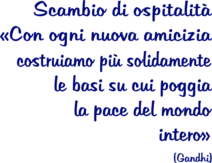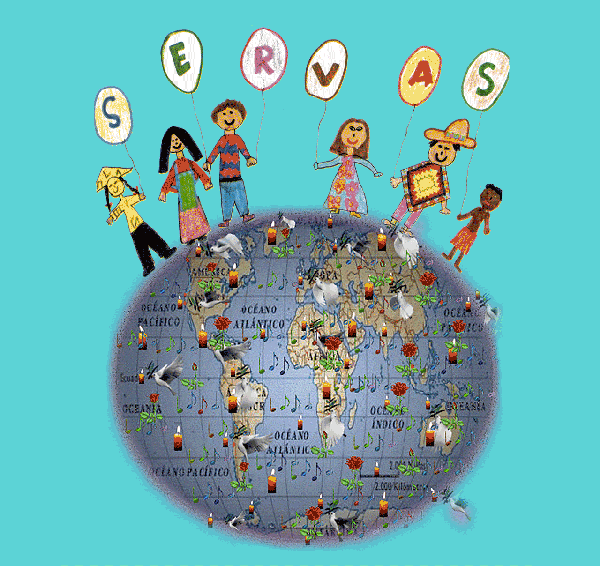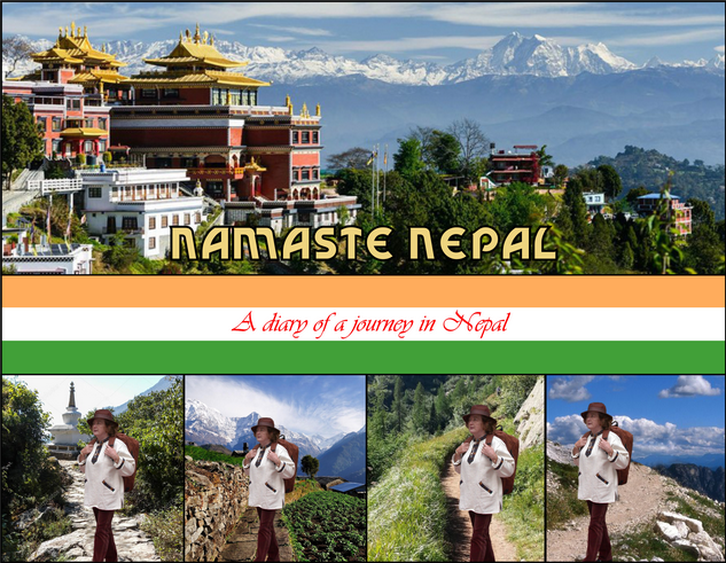
July 5th 9pm Kathmandu
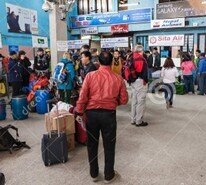 At the airport, Ibrahim, Jane and I are accosted by a crowd of Nepalese who offer us hotels and guesthouses “clean and very cheap”. With great difficulty, we manage to rid ourselves of them, but only by agreeing to take one of their taxis. The bus, they tell us, has already gone at this hour. A guard, who may not have been entirely unbiased, endorsed this declaration ...
At the airport, Ibrahim, Jane and I are accosted by a crowd of Nepalese who offer us hotels and guesthouses “clean and very cheap”. With great difficulty, we manage to rid ourselves of them, but only by agreeing to take one of their taxis. The bus, they tell us, has already gone at this hour. A guard, who may not have been entirely unbiased, endorsed this declaration ...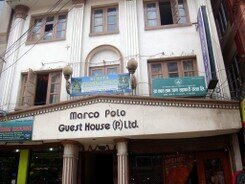 We arrive at the Marco Polo Guest House, which I had booked by letter from Italy. The owner, concerned, had already called the airport to find out why I had not yet arrived. Simple; the plane was two hours late, and that wasn’t all: our torch batteries had been seized and we had had a long walk around the airport to retrieve them. After the allocation of rooms, we go out to look for a restaurant. However, it’s past ten and everything is now completely closed. “I’m not really hungry”, I say to Jane, “I've had a plain dinner.”* However, Jane, who having declined the meal offered to us on the plane because she didn’t fancy it, consoles herself with some hazelnuts, the only edible thing available at this time.
We arrive at the Marco Polo Guest House, which I had booked by letter from Italy. The owner, concerned, had already called the airport to find out why I had not yet arrived. Simple; the plane was two hours late, and that wasn’t all: our torch batteries had been seized and we had had a long walk around the airport to retrieve them. After the allocation of rooms, we go out to look for a restaurant. However, it’s past ten and everything is now completely closed. “I’m not really hungry”, I say to Jane, “I've had a plain dinner.”* However, Jane, who having declined the meal offered to us on the plane because she didn’t fancy it, consoles herself with some hazelnuts, the only edible thing available at this time. * pun with plane
July 6th Bodnath
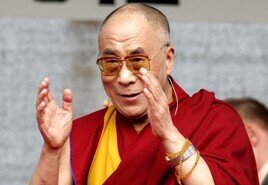 Today is the Dalai Lama’s birthday. It’s a must, therefore, to go to the Tibetan festival in Bodnath. I share a three wheeler with a Swede who lives in Rome and came to Nepal especially for this festival. We arrive there at nine, there are still few people around. I take this opportunity to climb the huge stupa. Meanwhile, I read the guide: "... The Bodnath stupa, 8 km from the centre of Katmandu, is the largest Buddhist shrine in Nepal. Originally built in the sixth century, its present state dates from the eleventh century. Placed at the culmination of three concentric octagonal terraces, the huge dome of whitewashed brick rises to 40 meters high, surmounted by a tower that on all four sides bears painted the immutable blue eyes of the serene Buddha.
Today is the Dalai Lama’s birthday. It’s a must, therefore, to go to the Tibetan festival in Bodnath. I share a three wheeler with a Swede who lives in Rome and came to Nepal especially for this festival. We arrive there at nine, there are still few people around. I take this opportunity to climb the huge stupa. Meanwhile, I read the guide: "... The Bodnath stupa, 8 km from the centre of Katmandu, is the largest Buddhist shrine in Nepal. Originally built in the sixth century, its present state dates from the eleventh century. Placed at the culmination of three concentric octagonal terraces, the huge dome of whitewashed brick rises to 40 meters high, surmounted by a tower that on all four sides bears painted the immutable blue eyes of the serene Buddha.
At the boundary wall there are hundreds of prayer wheels that the faithful spin during ritual circumambulation. The blinding white of the lime wash that covers the entire surface of the temple is often stained with orange saffron powder, which is thrown on the walls as a sign of devotion. The colourful prayer flags attached to the top await admission into heaven once faded and worn by the sun, wind and rain... "
The space under the awning is now crowded and some of these Tibetans have walked for days to reach here. Behind a curtain there are some groups of dancers wearing traditional costumes. All I know about Buddhist dance are the titles from a text I read before leaving. Here they are:

Will these titles be sufficient to follow the dance? I somehow doubt it!
July 7th
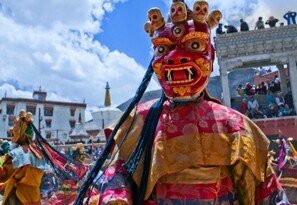 Increasingly difficult! After the dances of yesterday, (beautiful choreography but the meaning is often indecipherable), today is the epic scene. From what I understand from the local guide, it’s a Nepalese version of the Mahabharata. Although the gist of this long poem has been explained to me, (the recital lasts more than 5 hours) I don’t manage to follow it. There are long monologues, that for those unfamiliar with Tibetan, don’t mean anything. The last straw is that in the audience there is someone from Turin who speaks Tibetan and consequently could enlighten me somewhat about the performance, but is too arrogant to do so.
Increasingly difficult! After the dances of yesterday, (beautiful choreography but the meaning is often indecipherable), today is the epic scene. From what I understand from the local guide, it’s a Nepalese version of the Mahabharata. Although the gist of this long poem has been explained to me, (the recital lasts more than 5 hours) I don’t manage to follow it. There are long monologues, that for those unfamiliar with Tibetan, don’t mean anything. The last straw is that in the audience there is someone from Turin who speaks Tibetan and consequently could enlighten me somewhat about the performance, but is too arrogant to do so.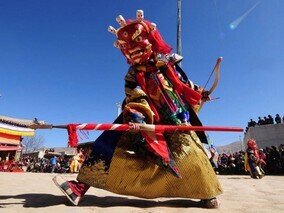 Among the spectators there are also hundreds of Tibetan children squatting on the ground, remaining quiet for the whole five hours. Some people sleep despite the bustle of the crowd or what is happening on stage (which is very little, actually), but no-one leaves and teachers can chat in peace. Out of sheer masochism I try to imagine Italian children in their place ...
Among the spectators there are also hundreds of Tibetan children squatting on the ground, remaining quiet for the whole five hours. Some people sleep despite the bustle of the crowd or what is happening on stage (which is very little, actually), but no-one leaves and teachers can chat in peace. Out of sheer masochism I try to imagine Italian children in their place ... I am also more attracted by the spectacle offered by the people than that offered by the actors: I like these Tibetans very much, with their rosy cheeks and peasant looks, a bit rough but so happy and full of life! (Anyone who has found themselves in a crowd of Tibetans will understand!)
8th July Swayambhunath
Today is the turn of Swayambu, the other large stupa near Kathmandu. It is 20 minutes by foot from Thamel. I saw it shining from on high above the green wooded hill on which it stands. The oldest in Nepal, it is the stupa of Adhi Buddha, the original Buddha, who appeared here in a lotus flame.

According to mythology, the temple was built to guard and protect the place where a small flame still burns. Its foundations date back to 2500 years ago, although its present form is from the fourteenth century.
The small sanctuary and the major part of the construction that crowns the hill were built between the 17th and 18th centuries. The steep stairs of the last section arrive right in front of the giant vajra, the thunderbolt of Indra and a Buddhist symbol of indestructible power. It is placed on a stone pedestal with twelve carved animals that represent the twelve months of the Tibetan year.

The terrace is covered with small votive temples, a pagoda and numerous statues, however, the large stupa covers the major part. A colossal statue of the Buddha marks the entrance.
Constructed from a dome of earth and bricks, the temple is crowned with a cube. Painted on the four bronze sides in red, white and black are the compassionate eyes of the Buddha, the third eye of wisdom and a nose in the form of the number one, the symbol of unity.

On each cardinal point there are the four niches of the Dhyani Buddha in meditation. The whole structure of the temple follows precise symbolic rules. Even here there is a line of prayer wheels and hundreds of votive lamps that consume hundreds of kilos of butter per day. There are also Hindu symbols in what is essentially a Buddhist complex. It is the first time I have seen this cultural mixture but I realise that there is more to come.
It is early and there are no tourists, the atmosphere is beautiful! There are men and women bringing their morning offerings and praying. They have come to ask a priest to celebrate the Puja. He is sitting on the floor in front of one of the lateral temples, equipped with rice, flowers, incense and a mysterious powder.....all the paraphernalia necessary for this occasion.  There is a man who is spraying saffron on the small Chaitya.
There is a man who is spraying saffron on the small Chaitya.
 There is a man who is spraying saffron on the small Chaitya.
There is a man who is spraying saffron on the small Chaitya.His t-shirt reads “EAT DESSERT FIRST, LIFE IS UNCERTAIN!” a materialist phrase yet one of the most spiritual of actions!
Whilst I sit on the parapet enjoying the sun and the panorama, one of the hundreds of monkeys that live here moves up to me without my noticing. 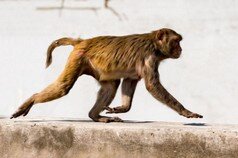 I jump back afraid he might bite me. I have read that many of these monkeys are infected with rabies, something that will later be confirmed by a German Scientist, who is in Nepal to study their behaviour. He explained that the monkey attacked me because it had been provoked or badly treated in the past by someone else and had therefore become aggressive to all human beings.
I jump back afraid he might bite me. I have read that many of these monkeys are infected with rabies, something that will later be confirmed by a German Scientist, who is in Nepal to study their behaviour. He explained that the monkey attacked me because it had been provoked or badly treated in the past by someone else and had therefore become aggressive to all human beings.
 I jump back afraid he might bite me. I have read that many of these monkeys are infected with rabies, something that will later be confirmed by a German Scientist, who is in Nepal to study their behaviour. He explained that the monkey attacked me because it had been provoked or badly treated in the past by someone else and had therefore become aggressive to all human beings.
I jump back afraid he might bite me. I have read that many of these monkeys are infected with rabies, something that will later be confirmed by a German Scientist, who is in Nepal to study their behaviour. He explained that the monkey attacked me because it had been provoked or badly treated in the past by someone else and had therefore become aggressive to all human beings. Returning from the stupa I am joined by two ‘well to do’ Milanese with a Nepalese guide. We take a short cut by crossing a wobbly bridge over the Vishnumati River whilst below us there are children and pigs splashing about in the mud. 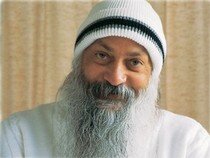 After I leave them I am approached by a foreigner asking me for information. She is Italian and a sannyasin follower of Rajneesh. With a strong sing song Venetian accent she explains why she had decided some years ago to follow this guru and how happy she was with her choice. She is here to get her tourist visa. When we part I say that we would probably meet again, Katmandhu is small, Thamel is smaller.
After I leave them I am approached by a foreigner asking me for information. She is Italian and a sannyasin follower of Rajneesh. With a strong sing song Venetian accent she explains why she had decided some years ago to follow this guru and how happy she was with her choice. She is here to get her tourist visa. When we part I say that we would probably meet again, Katmandhu is small, Thamel is smaller.
 After I leave them I am approached by a foreigner asking me for information. She is Italian and a sannyasin follower of Rajneesh. With a strong sing song Venetian accent she explains why she had decided some years ago to follow this guru and how happy she was with her choice. She is here to get her tourist visa. When we part I say that we would probably meet again, Katmandhu is small, Thamel is smaller.
After I leave them I am approached by a foreigner asking me for information. She is Italian and a sannyasin follower of Rajneesh. With a strong sing song Venetian accent she explains why she had decided some years ago to follow this guru and how happy she was with her choice. She is here to get her tourist visa. When we part I say that we would probably meet again, Katmandhu is small, Thamel is smaller.“If our karma permits it...” she replies.
Karma did not permit it; I never saw her again.
July 9th Bhagdaon or Bhaktapur
I hate the insufferable traffic and pollution of Katmandhu! By comparison the air we breathe in the most polluted European city is a breath of fresh air!
Part of my daily routine is to leave in the early morning for one of the smaller surrounding towns.
Today is the turn of Bhagdaon or Bhaktapur.
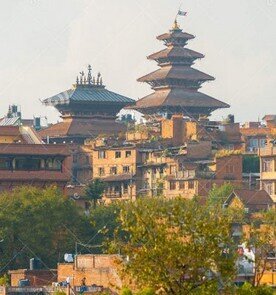 It is one of the Royal towns which competed with Katmandhu to be the capital city. You can get there by bus or tram and it takes about 20 minutes.
It is one of the Royal towns which competed with Katmandhu to be the capital city. You can get there by bus or tram and it takes about 20 minutes.According to mythology the city was founded by King Ananda Deva Malla, but in reality the squares with their temples and fountains were ancient villages that over the centuries grew and merged into one.
The original centre rose in the east in the area of the temple of Dhattatreya. However, when the town became the seat of the Malla and the capital of the entire valley between the fourteenth and sixteenth centuries, the building of new temples and palaces moved the centre westwood around Taumadi Tole.
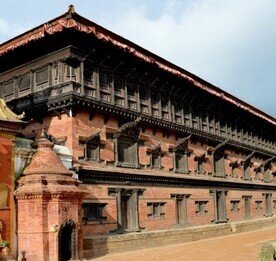 Durbar Square, the main square is flanked with temples and artworks. I like this square. In particular the wood cuttings by the Newari craftsmen. The palace of the 55 windows is a good example. Opposite this in the same square is the Golden Gate, a complex and elaborate carved work. There are the usual gods; Kali with eight arms and four heads, Garuda, Ganga, Jamuna, Hanuman, Narsingha, Narayan and many others.
Durbar Square, the main square is flanked with temples and artworks. I like this square. In particular the wood cuttings by the Newari craftsmen. The palace of the 55 windows is a good example. Opposite this in the same square is the Golden Gate, a complex and elaborate carved work. There are the usual gods; Kali with eight arms and four heads, Garuda, Ganga, Jamuna, Hanuman, Narsingha, Narayan and many others. In front of the Golden Gate on an enormous pedestal is the statue of the king Bhupatindra with his sword and turban which he offers in homage to Kali.Beside the pedestal rises the stone temple of Batsala Devi, home to the huge “bell of the barking dogs”. It is said that Ranjit Malla had it made so that it’s tone caused the dogs to howl and therefore scare away death from his palace. I ask around if this strategy works, but the response is negative.
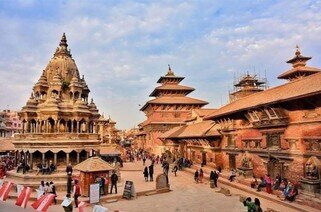 Five minutes from Durbar Square is my favourite square. Here you find the temple of Nyatapola, a beautiful five storey pagoda. It is built on a high platform reached by a steep staircase flanked by pairs of guardians that encourage you to enter. In order from the top there are: the gods Baghini & Singhini, two griffons, two lions, two elephants and two wrestlers . Each figure is considered ten times more powerful than that immediately under it and the wrestlers are considered more powerful than any man. In this square there is also the temple of Bhairavnath which is rectangular in plan.
Five minutes from Durbar Square is my favourite square. Here you find the temple of Nyatapola, a beautiful five storey pagoda. It is built on a high platform reached by a steep staircase flanked by pairs of guardians that encourage you to enter. In order from the top there are: the gods Baghini & Singhini, two griffons, two lions, two elephants and two wrestlers . Each figure is considered ten times more powerful than that immediately under it and the wrestlers are considered more powerful than any man. In this square there is also the temple of Bhairavnath which is rectangular in plan.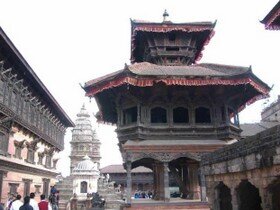 The reason I love this square however is not purely artistic. There was once a traditional temple in the form of a pagoda that had erotic carvings on the beams under the roof which has now been converted into a restaurant. From the balcony that runs around the whole building one can enjoy the magnificent view of the square. This became my favourite place for breakfast. One morning I watched the interesting way in which the waiter cleaned the glass table tops. First he spat generously on the table two or three times and then scrubed energetically with a rag that was in urgent need of cleaning itself. Who knows whether they clean the cutlery in the same way!
The reason I love this square however is not purely artistic. There was once a traditional temple in the form of a pagoda that had erotic carvings on the beams under the roof which has now been converted into a restaurant. From the balcony that runs around the whole building one can enjoy the magnificent view of the square. This became my favourite place for breakfast. One morning I watched the interesting way in which the waiter cleaned the glass table tops. First he spat generously on the table two or three times and then scrubed energetically with a rag that was in urgent need of cleaning itself. Who knows whether they clean the cutlery in the same way! Bhaktapur has remained my favourite place even after visiting many other beautiful and interesting places in my two month stay in Nepal.
July 9th 9am Katmandhu
Rain, rain and more rain!
I am sitting in the Marco Polo Hall. An ancient laundry woman is carrying on her back a huge bundle of tourist’s bedding and clothing to be washed. She is protected from the rain beating down on her by two plastic bags, one for her head and another much larger one for her clothes. A little while later an American woman, come to claim her clothes which are not dry due to the rain. She asks incredulously “ But ...you don’t have a spin dryer?” What innocence!
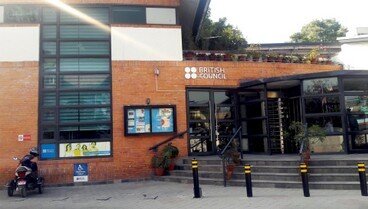 It is an ideal day for a visit to the library. I have just found out that the British Library is not far from my guest house and well supplied with books. This place I predicted would be where I would spend many hours, certainly on other rainy days like this one.
It is an ideal day for a visit to the library. I have just found out that the British Library is not far from my guest house and well supplied with books. This place I predicted would be where I would spend many hours, certainly on other rainy days like this one.Meanwhile I have to wait until 10 o’clock for the library to open. In the meantime I browse the publications in the hall. I find a leaflet entitled “Visitor’s Guide to Nepal, Printed by His Majesty’s Government of Nepal, Ministry of tourism”, there is a sentence that refers to the Pashupati Temple dedicated to Shiva:
“Entrance to the temple is permitted to the Hindus only” The word “permitted” is typed on a piece of paper and glued over the original word “restricted.” I imagine the poor Nepalese worker who patiently cut and pasted hundreds, no probably thousands of these words on all these leaflets.
July 10th 9am Pashupati
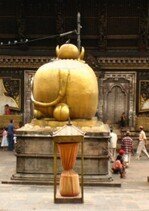 Unfortunately the word “permitted” in place of “restricted” has not changed anything for me. I cannot enter this beautiful temple and have to content myself with the giant hind quarters and other giant attributes displayed on the pedestal of the golden bull placed at the entrance.
Unfortunately the word “permitted” in place of “restricted” has not changed anything for me. I cannot enter this beautiful temple and have to content myself with the giant hind quarters and other giant attributes displayed on the pedestal of the golden bull placed at the entrance.One of the places in Pashupati that attracts me greatly is the “ghats”. Amongst other things they are an ideal place for meditation. I go in and sit down. Shortly after, the first two bodies arrive and they are prepared for the funeral pyre. Some cows come close and sniff the bodies, no one attempts to shoo them away. They are shortly followed by dogs and pigs. This is the beginning of the funeral ritual.

From the bridge overlooking the area men in western dress with a pretended air of elegance, throw large sacks of rubbish into the river. These men are obviously on their way to work, their wives having given them the rubbish on their way out of the house to get rid of it in some way. Given that there is no rubbish collection in the area they get rid of it by dumping it in the streets or in the river. The sacred Bagmati will take care of it!

July 13th Cycle ride
It’s Saturday and therefore a rest day. At first it is difficult to think of Saturday as a non working day but then it just becomes a habit. After a breakfast based on tea and bananas at 7.30 we leave.
Nima is the guide on this bicycle adventure. We start vigorously because I hope to escape the traffic before it becomes too busy. 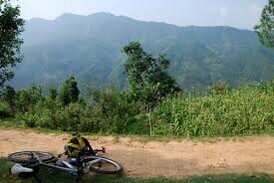 This strategy is hopeless, however, because scarsely two kilometers into the journey there is a shattering explosion. A rear tyre has exploded! We return to the bike shop on foot to exchange the bike for another and set out again.
This strategy is hopeless, however, because scarsely two kilometers into the journey there is a shattering explosion. A rear tyre has exploded! We return to the bike shop on foot to exchange the bike for another and set out again.
 This strategy is hopeless, however, because scarsely two kilometers into the journey there is a shattering explosion. A rear tyre has exploded! We return to the bike shop on foot to exchange the bike for another and set out again.
This strategy is hopeless, however, because scarsely two kilometers into the journey there is a shattering explosion. A rear tyre has exploded! We return to the bike shop on foot to exchange the bike for another and set out again. Stage one, Patan. At the Golden Temple I chat with the caretaker who also makes bronze Buddhas. He has been to Turin for business and is keen to recite all the places such as Porta Nuova, Porta Susa, Via Roma, Via Cernaia etc.
After this we head in the direction of Kirtipur, the city of the cut noses, but not before stopping to admire the Chobar Gorge on the way.
“Nestled on a hill 5km south west of Katmandhu, the medieval Newari fortress of Kirtipur was constructed by King Sada Siva Deva in the 12th Century. It was the stronghold that ruled over Gorkha. Pritvi Narayan Shah needed to attack this fortress in order to enter the valley and take the capital of the Malla kingdom. He besieged the fortress 3 times and it was only in 1768 that he finally succeeded. To vindicate his losses during these sieges he cut off the noses and lips of all the male occupants except one.
This was because of his love of music and the lucky one knew how to play a wind instrument. The evident signs of decay in the city are not linked entirely to this ancient defeat and its definitive eclipse as a flourishing and independent city, but also to the disastrous earthquake that occurred in 1934. Today Kirtipur appears as a neglected and melancholic city in a state of disrepair, its temples and beautiful houses with their triple wooden carved windows all in ruins.

During the day it is inhabited mainly by the old and children whilst the men and women are working in the fields or employed in traditional fabric making. In comparison with other places in the valley, however, it is more interesting because it has suffered less from tourism. Sitting in the shade along one of the dusty strips of road you can observe the life of a Newary town that has followed the same rhythm for centuries.”
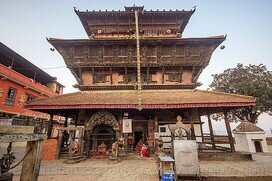 After drinking a couple of sweet warm Fantas purchased from a shop located right in front of the temple of Bagh Bairav, the tiger god, one of the manifestations of Shiva, we climb to the pagoda dedicated to Uma and Maheshwar, the divine couple of Shiva and Parvati.
After drinking a couple of sweet warm Fantas purchased from a shop located right in front of the temple of Bagh Bairav, the tiger god, one of the manifestations of Shiva, we climb to the pagoda dedicated to Uma and Maheshwar, the divine couple of Shiva and Parvati.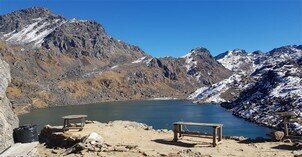 From here we admire the paddy fields spread out below us and Nima points out the peak of Langtang, where we will be going in a few days as guests of his relatives and of Gosainkund. Since his knowledge of architecture is no better than his knowledge of the mountains I take the lead and read:
From here we admire the paddy fields spread out below us and Nima points out the peak of Langtang, where we will be going in a few days as guests of his relatives and of Gosainkund. Since his knowledge of architecture is no better than his knowledge of the mountains I take the lead and read: “According to legend the temple of Hagh Bhairav was built in the 16th Century in the place where shepherds had jokingly moulded a clay tiger and later found it alive and with a full stomach due to it being on the sheep path. The temple is a pagoda built with four floors and three roofs supported by carved struts. From the central roof are hung shields, weapons and tools collected after the attack of Prithvi Narayan Shah on the fortress and offered to the gods by the devout. On the external walls of the ground floor there are some interesting frescos that show scenes from the Mahabharata in the late Malla style from the 16th century. They were however in a deplorable condition.
“According to legend the temple of Hagh Bhairav was built in the 16th Century in the place where shepherds had jokingly moulded a clay tiger and later found it alive and with a full stomach due to it being on the sheep path. The temple is a pagoda built with four floors and three roofs supported by carved struts. From the central roof are hung shields, weapons and tools collected after the attack of Prithvi Narayan Shah on the fortress and offered to the gods by the devout. On the external walls of the ground floor there are some interesting frescos that show scenes from the Mahabharata in the late Malla style from the 16th century. They were however in a deplorable condition.The Torana (a gateway) carved over the main entrance shows Vishnu riding Garuda and underneath it, Bhairav flanked by Ganesh and Kumar, the god of war”.

Earlier, whilst we were at Chobar Gorge, Nima had suggested going to Daksinkhali but I had refused. The idea of pedaling 20km uphill in this humidity whilst inhaling the exhaust fumes of the numerous buses carrying locals up to sacrifice goats and chickens did not appeal. However, since I feel full of energy and at this time of day I hope that the devout have all finished we return to the point where we had been this morning.
Whilst changing gear on my ancient mountain bike, (made in Taiwan) the chain comes off. My companion in misfortune fixes it and adjusts my gear mechanism in an instant. Now all I need is a puncture. Am I jinxed today?
The temple is located on the confluence of two rivers amongst the trees. It was built in the 17th century by Pratap Malla and is dedicated to the god Kali, here shown with 6 arms in the act of trampling Vetala with Ganesh.
I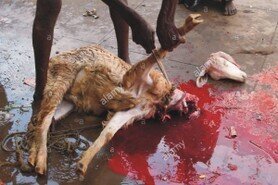 t is on this black stone sculpture that the blood of sacrificed animals is sprayed. The sacrificial animals are chickens, geese, goats, sheep and pigs. These animals must be ungelded males and dark in colour.
t is on this black stone sculpture that the blood of sacrificed animals is sprayed. The sacrificial animals are chickens, geese, goats, sheep and pigs. These animals must be ungelded males and dark in colour.
 t is on this black stone sculpture that the blood of sacrificed animals is sprayed. The sacrificial animals are chickens, geese, goats, sheep and pigs. These animals must be ungelded males and dark in colour.
t is on this black stone sculpture that the blood of sacrificed animals is sprayed. The sacrificial animals are chickens, geese, goats, sheep and pigs. These animals must be ungelded males and dark in colour.After the rite of sacrifice the animals are returned to their owners who, after plucking or skinning them, hand them back to be cut up by the butchers who are there for that reason, put them in pans of boiling water and they are then eaten in situ. In fact, when we arrive we pass a family group of twenty or so who have with them a gas stove with a cylinder. The women are carrying large saucepans balanced precariously on their heads. In the meantime I wipe the sweat from my face and cleaning off some of the soot accumulated during the trip, I am bathed in the delicious perfume of the last sacrificial victim being cooked. If only someone would invite me to lunch!
But as no one picks up my unspoken wish, we sit in one of the tea-shops lining the road that climbs to the temple. A glass of milky tea, sweet and hot, is not exactly what I want at the moment. (I have tried a few times to ask for tea without sugar but they always look at me strangely!)
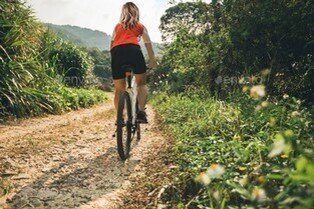 After having seen the slaughter of a dozen or so chickens and goats we leave at full speed down the mountain. I know that this will cost me at least a sore throat, but the pleasure of fresh air on my skin is too good to miss!
After having seen the slaughter of a dozen or so chickens and goats we leave at full speed down the mountain. I know that this will cost me at least a sore throat, but the pleasure of fresh air on my skin is too good to miss!Before arriving back at Kathmandu we take a turning to the right onto a dirt track that takes us towards a pretty village in the middle of brilliant green paddy fields. Soon, however, the road becomes impassable and we have to push our bikes. Even though we are only a few kilometres away from Kathmandu it seems light years away. Men and women are working in the fields, children running around and the oldies are playing Karen board in the shade of an ancient tree whilst a body is being burned on a pyre. All is quiet whilst life follows the rhythm of centuries, but for how much longer?
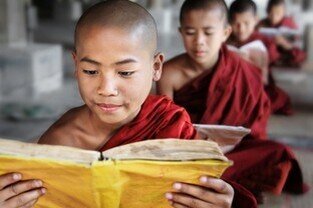 After passing through a wood we suddenly come out onto a tarmac road. We climb back on our bikes and head for Bodnath, our last destination for today.
After passing through a wood we suddenly come out onto a tarmac road. We climb back on our bikes and head for Bodnath, our last destination for today.We leave our bikes to visit one of the many monasteries that we find around the stupa. A group of child monks chant verses from a long narrow book that they unfold from the bottom to the top. Every now and again the sound of a horn cuts through the chanting. A monk passes and pours water over the heads of the boys, who try to move away and laugh.
We leave and head towards the temple; full of colour and like all Buddhist temples, contains a gigantic statue of Buddha. On our way out a palm reader offers to read my palm. I indicate that I am interested but do not have any money with me. He says he cannot read my palm without payment as this would bring bad luck. For me or more so for him?
14th July University
It is Sunday, a working day.
Two days ago I bought a large box of teabags because one of the boys that works at the guest house has invited me to breakfast with him. 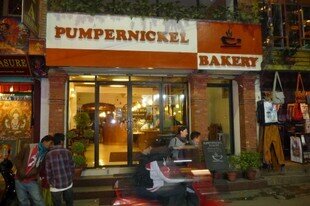 So as not to burden his meager income I bring the tea, sugar and biscuits, he, the hot water. However this morning when I go down he tells me that the key to the room that contains the gas burner has been lost. So I go to Pumpernickel, a onetime tea and Austrian pastry shop that has sadly gone downhill.
So as not to burden his meager income I bring the tea, sugar and biscuits, he, the hot water. However this morning when I go down he tells me that the key to the room that contains the gas burner has been lost. So I go to Pumpernickel, a onetime tea and Austrian pastry shop that has sadly gone downhill.
 So as not to burden his meager income I bring the tea, sugar and biscuits, he, the hot water. However this morning when I go down he tells me that the key to the room that contains the gas burner has been lost. So I go to Pumpernickel, a onetime tea and Austrian pastry shop that has sadly gone downhill.
So as not to burden his meager income I bring the tea, sugar and biscuits, he, the hot water. However this morning when I go down he tells me that the key to the room that contains the gas burner has been lost. So I go to Pumpernickel, a onetime tea and Austrian pastry shop that has sadly gone downhill.They tell me that they have lemon tea. I order some straight away as an alternative to the usual milk tea but it is a disappointment. I think it is made with freeze dried instant lemon flavoured tea. “Give me strength,” it means that tomorrow I will have to put up with sickly sweet milky tea again!
After talking to mum on the phone for a whole minute (150 Rupees) and after having woken her up (in Italy it is 4.30am), I go to the University with Dambar. He is an assistant in the physics department and to round off his life he also works at the guest house as a receptionist.
The bus that we take is so full that we are virtually hanging out of it. Up to this point I have only seen the locals doing this!
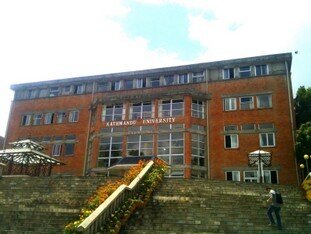 The University building is desolate inside. The library has never been dusted or the windows cleaned. Those that have been broken have not even been replaced. The physics hall reminds me of the dusty “scientific experimentation hall” of the Magistrale institute where I studied many years ago. The building inaugurated by the king at the end of the 60’s is located in the middle of a beautiful floral area.
The University building is desolate inside. The library has never been dusted or the windows cleaned. Those that have been broken have not even been replaced. The physics hall reminds me of the dusty “scientific experimentation hall” of the Magistrale institute where I studied many years ago. The building inaugurated by the king at the end of the 60’s is located in the middle of a beautiful floral area.The librarians offer me the chance to come back by myself and consult the books. At first this offer seems attractive, even though the procedure is somewhat complex, quite frankly excessively bureaucratic. 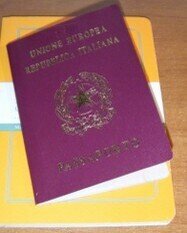 But then when I learn that each time I will have to fill in a form and leave my passport “as hostage” for as long as I am in the library, a shiver runs down my spine as Nepal has a flourishing market in stolen passports that fetch high sums on the black market. The Nepalese are amongst some of the most honest and upright people I have ever met but it seems stupid to leave my documents for all and sundry to get their hands on. When I ask where my passport would be kept I am met with the incredulous reply, “ Here, on the table naturally, where do you want me to put it?”
But then when I learn that each time I will have to fill in a form and leave my passport “as hostage” for as long as I am in the library, a shiver runs down my spine as Nepal has a flourishing market in stolen passports that fetch high sums on the black market. The Nepalese are amongst some of the most honest and upright people I have ever met but it seems stupid to leave my documents for all and sundry to get their hands on. When I ask where my passport would be kept I am met with the incredulous reply, “ Here, on the table naturally, where do you want me to put it?”
 But then when I learn that each time I will have to fill in a form and leave my passport “as hostage” for as long as I am in the library, a shiver runs down my spine as Nepal has a flourishing market in stolen passports that fetch high sums on the black market. The Nepalese are amongst some of the most honest and upright people I have ever met but it seems stupid to leave my documents for all and sundry to get their hands on. When I ask where my passport would be kept I am met with the incredulous reply, “ Here, on the table naturally, where do you want me to put it?”
But then when I learn that each time I will have to fill in a form and leave my passport “as hostage” for as long as I am in the library, a shiver runs down my spine as Nepal has a flourishing market in stolen passports that fetch high sums on the black market. The Nepalese are amongst some of the most honest and upright people I have ever met but it seems stupid to leave my documents for all and sundry to get their hands on. When I ask where my passport would be kept I am met with the incredulous reply, “ Here, on the table naturally, where do you want me to put it?”This is an interesting side of the oriental mindset. For those who live in eternity, what value would you have for a passport in the greater scheme of things? Why worry so much? Now when you come in contact with this philosophy in the temples it is one thing, but in an office a degree of rationality is surely needed.
This inflexible rule regarding the passport means that I opt to use the British library, where, apart from having to leave my bag at the entrance, there are no other formalities. It is a great pity because I had seen some books on art and Nepalese religion that I would have gladly read.
Midday, return to hotel
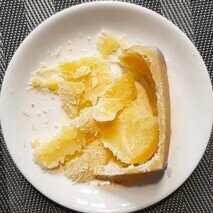 I go back to Kathmandu under my own steam because Dambar has got lessons. I get off the bus at the wrong stop, start walking in the wrong direction, in fact…… I lose my patience and instead of going back on foot I take a three wheeler.
I go back to Kathmandu under my own steam because Dambar has got lessons. I get off the bus at the wrong stop, start walking in the wrong direction, in fact…… I lose my patience and instead of going back on foot I take a three wheeler.Lunch in my room: yak’s cheese, (good but so greasy!), sardines bought from the Swedish  supermarket for trekkers that I eat mushed up because the tin opener breaks straight away and I have to take my chances with what’s available, Malaysian rubra of dubious colour (on the label it says that it contains colouring and artificial flavours) and it has an even more dubious taste (why on earth did I buy it?), Nepalese rum and Hymalayan honey dissolved in hot water for my swollen throat.
supermarket for trekkers that I eat mushed up because the tin opener breaks straight away and I have to take my chances with what’s available, Malaysian rubra of dubious colour (on the label it says that it contains colouring and artificial flavours) and it has an even more dubious taste (why on earth did I buy it?), Nepalese rum and Hymalayan honey dissolved in hot water for my swollen throat.
 supermarket for trekkers that I eat mushed up because the tin opener breaks straight away and I have to take my chances with what’s available, Malaysian rubra of dubious colour (on the label it says that it contains colouring and artificial flavours) and it has an even more dubious taste (why on earth did I buy it?), Nepalese rum and Hymalayan honey dissolved in hot water for my swollen throat.
supermarket for trekkers that I eat mushed up because the tin opener breaks straight away and I have to take my chances with what’s available, Malaysian rubra of dubious colour (on the label it says that it contains colouring and artificial flavours) and it has an even more dubious taste (why on earth did I buy it?), Nepalese rum and Hymalayan honey dissolved in hot water for my swollen throat.It was such an easy prediction of mine yesterday, whilst launching myself down the hill at Daksinkhali!
I’ll take an after lunch nap and then go with Sandra, also a guest at the Marco Polo,to meet Lilla, who sells jewelry in Durbar Square and (says Sandra) speaks perfect Italian.
16th July on the way to Janakpur
I confess I was rather hesitant about travelling to Janakpur. Doubts based on the fact it being the monsoon season the condition of the roads is scary.
Janakpur is about 200km as the crow flies south east of Kathmandu, but to get there you have to cross half of Nepal. First you take the road to Pokhara to the west, then half way you change direction south to Terai, then you go east – a total journey of 12 hours. On the other hand, I do want to see a bit of the Nepalese plains – this is what tips the balance.
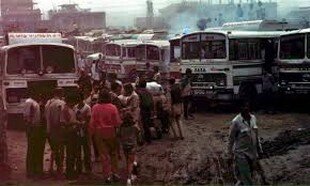 I find myself at the bus station at six in the morning even though the time on the ticket that I bought yesterday says 6.30. At 7 there is still no sign of the bus. We leave at 7.30 at speed. Maybe a tentative attempt to make up the lost hour?
I find myself at the bus station at six in the morning even though the time on the ticket that I bought yesterday says 6.30. At 7 there is still no sign of the bus. We leave at 7.30 at speed. Maybe a tentative attempt to make up the lost hour?Unfortunately we don’t get far – two hours later the bus breaks down and there is no hope of repairing it. After half an hour, the bus which was scheduled to leave Katmandu at 7 arrives.
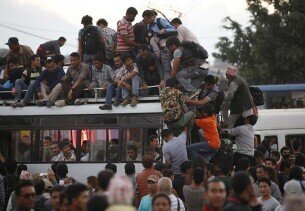 I’m brought down to earth by the prospect of getting on this second bus. Buses in Nepal already travel packed to the gunnels without having to double the number of passengers. Besides there is still about 10 hours journey ahead of us and there is the unattractive idea of standing with my head bent because the roof of the bus is too low to allow me to stand straight, shaken by the continuous bumps from the uneven road surface and crushed by the crowd. Luckily my ticket from the broken down bus helps me to push my way through the crowd and to convince two Nepalese to share their seat with me. Since the seats in Nepalese buses are very small (their size!), I’m hanging off the edge of the seat, but it’s always better than standing.
I’m brought down to earth by the prospect of getting on this second bus. Buses in Nepal already travel packed to the gunnels without having to double the number of passengers. Besides there is still about 10 hours journey ahead of us and there is the unattractive idea of standing with my head bent because the roof of the bus is too low to allow me to stand straight, shaken by the continuous bumps from the uneven road surface and crushed by the crowd. Luckily my ticket from the broken down bus helps me to push my way through the crowd and to convince two Nepalese to share their seat with me. Since the seats in Nepalese buses are very small (their size!), I’m hanging off the edge of the seat, but it’s always better than standing.And what does it matter being uncomfortable, when you find yourself among people who are continuously showing their generosity and solidarity? It’s for this reason that I come to countries like this one – to rediscover these characteristics that no longer exists in our society – and I couldn’t care less about the discomfort, the hard life and food that is always the same.
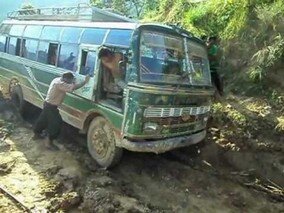 I try to look out of the window but I don’t see much. It’s still pouring down and our progress is very slow through mud half a metre deep. We pass a very long column of soldiers marching, they do look miserable! There are road works along the whole of the road and we proceed at a snail’s pace; we often have to stop to let the oncoming construction lorries pass. Watching these road works it reminds me of the toils of Sisyphus, from classical legend. During the night, the monsoon rains destroy all the progress that has been made during the day.
I try to look out of the window but I don’t see much. It’s still pouring down and our progress is very slow through mud half a metre deep. We pass a very long column of soldiers marching, they do look miserable! There are road works along the whole of the road and we proceed at a snail’s pace; we often have to stop to let the oncoming construction lorries pass. Watching these road works it reminds me of the toils of Sisyphus, from classical legend. During the night, the monsoon rains destroy all the progress that has been made during the day.All the work is carried out by hand; axes, clubs, spades, picks, … they work in tandem with the spades; the man sinks the spade into the ground and the woman pulls the rope tied to the base of the handle to help him lift the weight of earth.
The road follows the Trisuli river where you can go rafting. I see groups of tourists with expensive equipment and ragged Nepalese who look after them in their role of ‘factotum’, (servant).
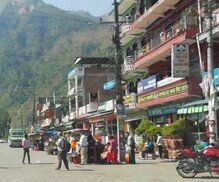 We stop at Mugling to eat. There are a dozen restaurants in the square and it is immediately obvious which ones are for ‘local people’ and which ones for tourists. Quite simply the latter ones have a certain ‘kitch’ air about them that is often the case with these kind of places for foreigners in poor counties when there hasn’t been much capital invested.
We stop at Mugling to eat. There are a dozen restaurants in the square and it is immediately obvious which ones are for ‘local people’ and which ones for tourists. Quite simply the latter ones have a certain ‘kitch’ air about them that is often the case with these kind of places for foreigners in poor counties when there hasn’t been much capital invested. 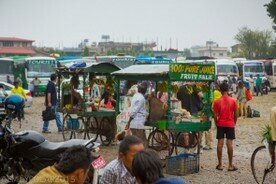 As the bus that I am on isn’t a tourist one but a normal service bus, with me being the only stranger, the driver directs us to one of the restaurants ‘for locals’. Who knows what his commission is for bringing passengers here, be it a free meal or something more?
As the bus that I am on isn’t a tourist one but a normal service bus, with me being the only stranger, the driver directs us to one of the restaurants ‘for locals’. Who knows what his commission is for bringing passengers here, be it a free meal or something more?I don’t eat; not because I don’t trust the food as is the case with lots of tourists in countries like this where hygiene isn’t exactly first rate and they find everything disgusting, but because I never eat when I’m travelling. As the stop is going to be for half an hour I go for a walk around the town.
It’s also due to the rain and the mud, but what squalor!
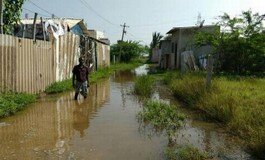 In front of a shack I see a hen and a cockerel with their feet tied together. The cockerel wants to go one way and the hen the other and they both tug at each other trying to free themselves from the knot that keeps them tied up. To me the animals symbolise marriage.
In front of a shack I see a hen and a cockerel with their feet tied together. The cockerel wants to go one way and the hen the other and they both tug at each other trying to free themselves from the knot that keeps them tied up. To me the animals symbolise marriage.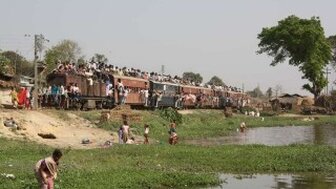 A little further on, there is a pond with lots of geese swimming happily around. Their master arrives and calls to them. Flapping contentedly the geese assemble in single file and swim quickly towards him. Then they swiftly get out of the water, still in single file, and follow their master.
A little further on, there is a pond with lots of geese swimming happily around. Their master arrives and calls to them. Flapping contentedly the geese assemble in single file and swim quickly towards him. Then they swiftly get out of the water, still in single file, and follow their master.I go back to the square. Everyone has finished eating and so we get back on the bus and leave.
7 pm Janakpur
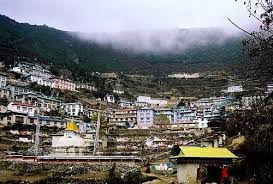 I love travelling alone but there are times when my enthusiasm wanes. I had read in the guide that Janakpur is ‘Indian in every respect except politically,’ but the looks and comments that I get between the bus station and my hotel give me a sense of unease and oppression. In Nepal it’s not normally like this.
I love travelling alone but there are times when my enthusiasm wanes. I had read in the guide that Janakpur is ‘Indian in every respect except politically,’ but the looks and comments that I get between the bus station and my hotel give me a sense of unease and oppression. In Nepal it’s not normally like this. Even the Welcome hotel suggested in the guide is Indian. It belongs to an Indian who lives a long way away, it was built by Indians, it is run by Indians and is full of Indians…

Already from the lobby on the ground floor there is a smell of urine that takes your breath away. I go up the stairs littered with every imaginable sort of rubbish and what with the encrusted walls and the dim light bulbs there is a nightmarish atmosphere.
They show me a few rooms: small, suffocating, with small high windows which resemble a medieval prison cell. I don’t suffer from claustrophobia but there is no way I’m going to be able to spend the night in a place like this.
And the prices too! Much more expensive than those indicated in the guide. In the end they show me the suite on the top floor for which they are asking an exorbitant price of 350 rupees. I’ll describe it: on the floor there are the remains of what was once linoleum, curling and bubbling and somewhat of a trap for the unfortunate occupant of the room; the furniture comprised of a small rickety table, a small fake leather sofa with sagging seats and springs sticking out, two beds with dirty sheets and finally the walls and ceiling as stained and encrusted as the stairway.
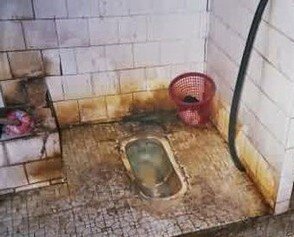 In the bathroom there are large brown marks everywhere; on the white wall tiles, on the bath tub and on the toilet, caused by the brown liquid which they call water. Beetles as big as walnuts appear and disappear through holes. I turn on the tap and then the shower and the same brown liquid that I see everywhere comes out. They say that there is a ‘shortage of water’ – the water that is coming out of the tap must be from the depths of the water tank - so why waste it in the bathroom? And a… ‘shortage of water’ in the wet season? But what if it’s tipping it down outside!
In the bathroom there are large brown marks everywhere; on the white wall tiles, on the bath tub and on the toilet, caused by the brown liquid which they call water. Beetles as big as walnuts appear and disappear through holes. I turn on the tap and then the shower and the same brown liquid that I see everywhere comes out. They say that there is a ‘shortage of water’ – the water that is coming out of the tap must be from the depths of the water tank - so why waste it in the bathroom? And a… ‘shortage of water’ in the wet season? But what if it’s tipping it down outside!I go down to reception to ask for a hand towel so I can clean my hands after having got them dirty from the water but they give me one that is so dirty that I don’t have the courage to use it. As there is a restaurant I order a pot of tea without milk and sugar. They bring me a glass of extremely sweet and milky tea that they have bought from one of the street tea sellers, reselling it to me for 5 times the price. Seeing as I can’t be bothered to make a fuss, I decide that from now on I won’t ask for anything else – I’ll pay the price asked for the room even if I think it is overpriced and I’ll go back to Katmandu tomorrow, although I had planned to stay a bit longer.
I go to bed with a certain sense of anguish; I hope that the drunken Indians who I had seen earlier drifting around on the terrace outside my room won’t be bothering me tonight. So that I don’t hear the brawl anymore I decide to use earplugs.
17th July Janaki Mandir
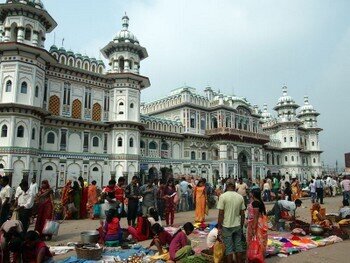 I wake, as usual, at dawn and I'm hungry. The last meal, apart from a few bananas eaten yesterday, was two days ago.
I wake, as usual, at dawn and I'm hungry. The last meal, apart from a few bananas eaten yesterday, was two days ago.I get dressed and I go out at six to find a restaurant. Since I don’t find one, I go into a tea room to at least have a cup of tea. I observe the original way in which the tea maker fills the glasses. He puts them all in a row then raises the pot to more than a meter high and pours the tea without stopping. In a niche between the various offerings to Shiva, I see light bulbs. Curious! I take a look at one and the filament has blown. I look at the others - the same thing. It seems to me the same practical principle of Daksinkhali: there you eat the meat that is first offered in sacrifice, here is the same deal with light bulbs; when no longer needed, they are offered to the deity. Nothing should be wasted!

With my increasingly empty stomach, I visit the city. First stop, the temple. It is called Janaki Mandir and is the pilgrimage destination for Hindus.
It is dedicated to Sita, the beautiful princess, wife of Rama, celebrated in the Ramayana. It reminds me of those firework models that elementary school children make (or made) from cardboard tubes.
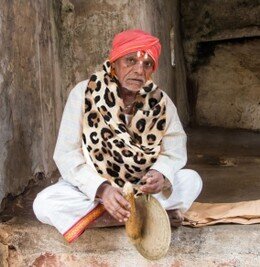 I stop for a while in the courtyard surrounding the temple to observe the incredible passing people. Meanwhile almost all the sadhus here have leopard print tunics -I don’t know why. Do they have some symbolic significance? Now a guy with a white Navy uniform goes by, with lots of braid. Where did he get it from? To complete the attire, or perhaps to demystify it, he has a golden chain mail bag hanging from his shoulder on a gold chain. Around his neck he wears a necklace made with those seeds, whose name escapes me now, that all the leading Indian sadhu or gurus wear.
I stop for a while in the courtyard surrounding the temple to observe the incredible passing people. Meanwhile almost all the sadhus here have leopard print tunics -I don’t know why. Do they have some symbolic significance? Now a guy with a white Navy uniform goes by, with lots of braid. Where did he get it from? To complete the attire, or perhaps to demystify it, he has a golden chain mail bag hanging from his shoulder on a gold chain. Around his neck he wears a necklace made with those seeds, whose name escapes me now, that all the leading Indian sadhu or gurus wear.Another curious type is now standing next to me and tells me something I do not understand. He is wearing a pink sari and is smoking. He has very long hair held back by a red band holding a long peacock feather high on his head. Since I do not understand what he says he starts to read a book of verses, half aloud, half chanting.
And now a family group arrives: the very small father carries his daughter, who is twice the size of him, on his shoulders while his wife is following with their household goods. Like Catholics take their incurably ill to Lourdes, evidently Hindus carry them here in the hope of a miracle.
And now a family group arrives: the very small father carries his daughter, who is twice the size of him, on his shoulders while his wife is following with their household goods. Like Catholics take their incurably ill to Lourdes, evidently Hindus carry them here in the hope of a miracle.

How many things in common different religions of the world have! We are here in Janakpur where there are many artisan silversmiths.
Whilst I’m in one of their shops a beautiful, tall, young Nepalese man approaches and addresses me. He is wearing glasses and has an intellectual air about him. 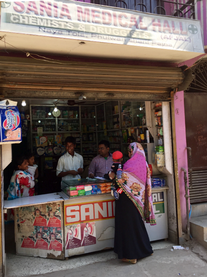 He is a pharmacist and has his shop on this same street. We go there because I am interested to see what kind of medicines are sold. Meanwhile, we chat and I ask him where he completed his studies. No studies, he says. He worked for two years in a practice run by another pharmacist, then opened the shop. I look at some of the boxes of medicines which are all imported from India but unfortunately they aren’t ayurvedic medicines or herbal remedies, but chemical ones. Moreover, they have all expired. I tell him this and he replies that he had been sold them at a lower price by the pharmacist who he worked for before. When you start a business, he adds, it all costs so much money! Sooner or later I’ll have to throw them out ...
He is a pharmacist and has his shop on this same street. We go there because I am interested to see what kind of medicines are sold. Meanwhile, we chat and I ask him where he completed his studies. No studies, he says. He worked for two years in a practice run by another pharmacist, then opened the shop. I look at some of the boxes of medicines which are all imported from India but unfortunately they aren’t ayurvedic medicines or herbal remedies, but chemical ones. Moreover, they have all expired. I tell him this and he replies that he had been sold them at a lower price by the pharmacist who he worked for before. When you start a business, he adds, it all costs so much money! Sooner or later I’ll have to throw them out ...
 He is a pharmacist and has his shop on this same street. We go there because I am interested to see what kind of medicines are sold. Meanwhile, we chat and I ask him where he completed his studies. No studies, he says. He worked for two years in a practice run by another pharmacist, then opened the shop. I look at some of the boxes of medicines which are all imported from India but unfortunately they aren’t ayurvedic medicines or herbal remedies, but chemical ones. Moreover, they have all expired. I tell him this and he replies that he had been sold them at a lower price by the pharmacist who he worked for before. When you start a business, he adds, it all costs so much money! Sooner or later I’ll have to throw them out ...
He is a pharmacist and has his shop on this same street. We go there because I am interested to see what kind of medicines are sold. Meanwhile, we chat and I ask him where he completed his studies. No studies, he says. He worked for two years in a practice run by another pharmacist, then opened the shop. I look at some of the boxes of medicines which are all imported from India but unfortunately they aren’t ayurvedic medicines or herbal remedies, but chemical ones. Moreover, they have all expired. I tell him this and he replies that he had been sold them at a lower price by the pharmacist who he worked for before. When you start a business, he adds, it all costs so much money! Sooner or later I’ll have to throw them out ...Finally I come across a restaurant: it is Indian of course, and the waiter tells me that his family lives in Bihar and that every year he comes to work here for six months.
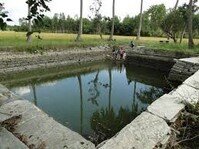
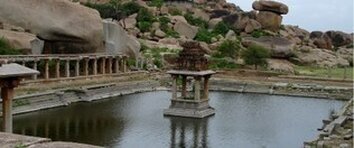 I order tandoori chicken, but when I get it, I realize that, more than anything else, it is tandoori bones! Fortunately, there are rice and vegetables to fill my stomach.
I order tandoori chicken, but when I get it, I realize that, more than anything else, it is tandoori bones! Fortunately, there are rice and vegetables to fill my stomach.
I note that on my table there is a bottle full of water, in which plastic flowers are immersed. What westerner would ever think to put artificial flowers in water?

 I order tandoori chicken, but when I get it, I realize that, more than anything else, it is tandoori bones! Fortunately, there are rice and vegetables to fill my stomach.
I order tandoori chicken, but when I get it, I realize that, more than anything else, it is tandoori bones! Fortunately, there are rice and vegetables to fill my stomach.I note that on my table there is a bottle full of water, in which plastic flowers are immersed. What westerner would ever think to put artificial flowers in water?
July 18th: Return to Katmandu
Half an hour before it is due to leave, I'm already seated on the bus, which is filling up little by little. At a certain point, and when all the seats are taken, a Tibetan woman with a small baby boards. Seeing that no-one shows any sign of giving up their seat, I get up and signal to her to take my place. She accepts with a smile and once seated starts breast feeding the baby. She seems rather concerned, though, regarding the contents of a sack she has left in the gangway and she is quick to shoo away anyone who tries to sit on it. 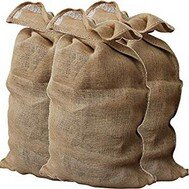 She has told me she runs a shop so it's likely that she's come to Janakpur to stock up and the sack could well be full of such things as packets of crisps, pop-corn or other junk food of the kind which, alas, is becoming popular even here.
She has told me she runs a shop so it's likely that she's come to Janakpur to stock up and the sack could well be full of such things as packets of crisps, pop-corn or other junk food of the kind which, alas, is becoming popular even here.
 She has told me she runs a shop so it's likely that she's come to Janakpur to stock up and the sack could well be full of such things as packets of crisps, pop-corn or other junk food of the kind which, alas, is becoming popular even here.
She has told me she runs a shop so it's likely that she's come to Janakpur to stock up and the sack could well be full of such things as packets of crisps, pop-corn or other junk food of the kind which, alas, is becoming popular even here.After we've been travelling for a couple of hours, we stop to take on huge sacks of Nepalese cucumbers. Judging by the huge effort it takes to heave these sacks up onto the roof of the bus,I guess they must weigh a total of several hundred kilos. “Let's hope the tyres are good and strong!” is the comment of one of my fellow passengers. I can't help thinking that in fact the bus is already packed to overflowing and considering the condition of the roads . . . . .
Unfortunately my fears prove not to be unfounded! Less than half an hour along the road one of the rear tyres literally explodes. Two or three men take advantage of this unscheduled stop to get out and go for a 'comfort stop' taking a torch with them. Not one of them stops to provide some light for the poor devil who has to change the wheel in the pouring rain and pitch darkness. I get off to provide some light and find I have to get into the most uncomfortable, twisted position in order to shine the torch beneath the bus to where the spare wheels are chained right in the middle under the floor of the bus.
The operation of releasing and fitting a spare wheel takes the best part of half an hour and by the time it's done I'm soaked to the skin. Unfortunately the tyres will deflate and have to be replaced four more times. Since we don't have so many spare tyres, we're obliged to stop twice at service stations to get the tyres mended on the spot. However, on these two occasions I merely hand my torch over to those involved without leaving the bus. Kindness is okay, but not at the cost of catching pneumonia.
Despite the dangers and being beset by accidents, this mainly nocturnal journey was wonderful; going through villages lit only by candlelight or oil lamps was like being in one of those Christmas crib scenes.
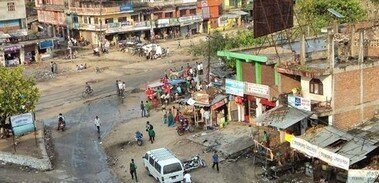 When we stop at Bardiwas, a very sick woman comes aboard; she is being taken to hospital in Katmandu. The youths and men around her are chain smoking showing no regard at all for this poor woman who can hardly breathe. By the way, I'd like to suggest that the saying “to smoke like a Turk” be rephrased to “to smoke like a Nepalese”. In all the countries I've visited so far I've never seen such dedicated, persistent, hardened smokers as the Nepalese.
When we stop at Bardiwas, a very sick woman comes aboard; she is being taken to hospital in Katmandu. The youths and men around her are chain smoking showing no regard at all for this poor woman who can hardly breathe. By the way, I'd like to suggest that the saying “to smoke like a Turk” be rephrased to “to smoke like a Nepalese”. In all the countries I've visited so far I've never seen such dedicated, persistent, hardened smokers as the Nepalese.It continues to pour with rain and I can't see anything through the bus windscreen. It suddenly dawns on me – this bus has no windscreen wipers! The bus carries on blindly through a wall of water. There seems to be nothing for it but to close my eyes and try to sleep to avoid further shocks. It's not long, however, before I can feel I'm being shaken by someone. Opening my eyes I see a man, looking and sounding upset, saying: “Foot down! Foot down!”.
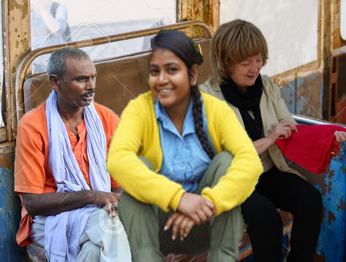 At first I can't quite understand what he's getting at, but then I realise that he wants me to move my feet which I had put up to rest them. In the Hindu religion feet are considered to be the most impure part of our body and therefore they are to be kept in a low position as far away from the head as possible. Religious taboos frequently coincide with rules of hygiene, or in any case with life conserving rules, but in this case the opposite was true. Anyhow, I do as asked and close my eyes again.
At first I can't quite understand what he's getting at, but then I realise that he wants me to move my feet which I had put up to rest them. In the Hindu religion feet are considered to be the most impure part of our body and therefore they are to be kept in a low position as far away from the head as possible. Religious taboos frequently coincide with rules of hygiene, or in any case with life conserving rules, but in this case the opposite was true. Anyhow, I do as asked and close my eyes again.But I am fated not to sleep. At one of our many stops a rather well-made woman gets on who, having pushed my luggage even further away, plonks herself down on me and on the passenger seated next to me. At first the whole thing seems just too absurd to be true; there's simply no room for a third person on these small seats and she can hardly expect to travel on our laps for the rest of the trip. I first attempt to make her understand this with a smile, but, when I see that she has no intention of moving, I push her away.
I'm usually kind to the Nepalese to the point of self-denial, but I can't stand arrogance either here or anywhere else. And in this case I don't even have any qualms about depriving a local of a seat. The bus is privately owned and there is a no-charge booking service. I wonder what kind of woman she is: she boarded the bus alone in the dead of night; she is talking, laughing and joking with the male passengers, in a country like Nepal where women do not go out and about alone, even in daylight and near home, and they would never dream of speaking to strangers, let alone men . . . . .
When she finally goes away I try to go to sleep again but the precipices I can make out just inches from the bus wheels are not inducive to relaxation.
Evidently, though, my final hour has yet to come since I arrive in Katmandu safe and sound. It's eleven o'clock and I've been travelling for eighteen hours. The sacks of cucumbers are unloaded; the fish, which has travelled with us hung out of the bus window, is delivered and its receiver sniffs it repeatedly before finally carrying it off; the sick woman, looking even more deadly pale, is helped into a cycle rickshaw.
And it is with these last images in my eyes that I go off in search of a three wheeler, happy for once to plunge into the traffic of the capital.
July 19th: Back in Katmandu
My grandfather always used to say: “There's no better sauce than hunger to make the food appetising!” I think this is exactly my case right now. I decide to go and have something to eat and drink at K.C. In fact, apart from the bones of the tandoori chicken and a little rice, I didn't have anything to eat at Janakpur.
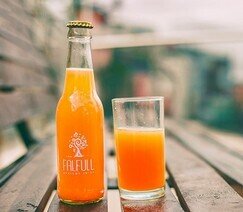 At the table next to mine there's one of those tourists that begs the question: What on earth do these people come to Nepal for? Why don't they go and have a nice holiday in Switzerland?
At the table next to mine there's one of those tourists that begs the question: What on earth do these people come to Nepal for? Why don't they go and have a nice holiday in Switzerland?This one is French. For one thing K.C. is a restaurant tailor-made for tourists; in fact you see only tourists here. International cuisine, drinks in sealed bottles or cans, disinfected vegetables; in short nothing to complain about.
This French tourist starts by asking for a fruit juice and then when it arrives wants to know what make it is. The waiter obligingly brings the tin for her to see. She takes a look, shakes her head and sends it back, ordering some mineral water instead, but provided the bottle is well closed, for goodness' sake! The waiter returns with the mineral water. She feels the bottle: “But it's too cold!” The waiter, with admirable patience, takes this bottle back and returns with another at room temperature. She looks as though she is about to remark that this bottle is too warm but bites back her words only because the friend who is with her is clearly extremely embarrassed at this point. Then begins the 'window test' on the glass. Clearly the result leaves a lot to be desired regarding the cleanliness of the glass seeing that she picks up her napkin and starts rubbing the said object both inside and out with determined energy.
I have seen other tourists like her around here; they stay in Katmandu for their entire holiday or, at most, they venture as far as Pokhara in the tourist minibus. They get up around ten in the morning, breakfast in the restaurants of Thamel, then, all dressed up, wander around the shops looking for some exotic object to show off at home, or a bargain to boast about with friends. They leave Nepal with a very limited experience of the country, an experience which, furthermore, is misleading and false, and having caused harm more than anything else.
July 20th Quid Pro Quo
 Walking around with my faithful companion, 'Lonely Planet Guide', looking for 'Mike's Breakfast'. In vain. No-one seems to know where it is. So I opt for the 'French Bakery', which is on the same street. This is an American style eatery, all green plastic and rock music blaring. The prices are rather steep but, well, I'm here hungry and thirsty . . . . .
Walking around with my faithful companion, 'Lonely Planet Guide', looking for 'Mike's Breakfast'. In vain. No-one seems to know where it is. So I opt for the 'French Bakery', which is on the same street. This is an American style eatery, all green plastic and rock music blaring. The prices are rather steep but, well, I'm here hungry and thirsty . . . . .What's more, I'm willing to go to any length to get away from the stink of the innumerable piles of rubbish.
Having ordered the usual pot of tea and the usual omelette, I decide to make a last attempt to locate the elusive restaurant by asking the waiter if he can help.  “Do you know where 'Mike's Breakfast' is?” I enquire. He looks very apologetic as he replies: “Sorry, madam, we only have these breakfasts”, pointing to the paper place mat on which there are pictures labelled 'Tom's breakfast', 'Jack's breakfast'.
“Do you know where 'Mike's Breakfast' is?” I enquire. He looks very apologetic as he replies: “Sorry, madam, we only have these breakfasts”, pointing to the paper place mat on which there are pictures labelled 'Tom's breakfast', 'Jack's breakfast'.
 “Do you know where 'Mike's Breakfast' is?” I enquire. He looks very apologetic as he replies: “Sorry, madam, we only have these breakfasts”, pointing to the paper place mat on which there are pictures labelled 'Tom's breakfast', 'Jack's breakfast'.
“Do you know where 'Mike's Breakfast' is?” I enquire. He looks very apologetic as he replies: “Sorry, madam, we only have these breakfasts”, pointing to the paper place mat on which there are pictures labelled 'Tom's breakfast', 'Jack's breakfast'.What an incredible coincidence; the only time I've ever found breakfasts called by people's names.
July 21st
K.C. is closed today so I go to the restaurant opposite.  There I fall into conversation with a woman who is eating alone and who turns out to be English and Jewish – at least I deduce the latter from the Star of David pendant she's wearing round her neck. But over this there's another symbol I don't recognise and I ask her what it means.
There I fall into conversation with a woman who is eating alone and who turns out to be English and Jewish – at least I deduce the latter from the Star of David pendant she's wearing round her neck. But over this there's another symbol I don't recognise and I ask her what it means.
 There I fall into conversation with a woman who is eating alone and who turns out to be English and Jewish – at least I deduce the latter from the Star of David pendant she's wearing round her neck. But over this there's another symbol I don't recognise and I ask her what it means.
There I fall into conversation with a woman who is eating alone and who turns out to be English and Jewish – at least I deduce the latter from the Star of David pendant she's wearing round her neck. But over this there's another symbol I don't recognise and I ask her what it means.She explains that it's the symbol of a movement for the freedom of lesbians. She goes on to say that right here in Katmandu she's discovered a Jewish Italian writer, Primo Levi, and has bought the English edition of his 'Se non ora, quando?' ['If Not Now, When?'] in one of the second-hand bookshops. I tell her that Levi was from Turin, my city, and that he committed suicide some years ago. As tears come to her eyes, I hastily change the subject.
July 22nd
The time has come to leave behind the relative luxury and comfort of Katmandu in order to go and share their 'uncomfortable' life with the Sherpas.
July 22nd - 23rd On the way to Shermatang
At ten o'clock, Laghkpa, Didi, Kelly and I leave for Banepa on a very old and run-down bus. Having stopped at Bhaktapur, which I know already, then Dhulikel, Panchal and Bahunpati, we arrive at Banepa a little before midday.
A quick lunch and then off again to Malemchi Pul. The road is horrendous, the bus is packed, we arrive exhausted.
To get back on our feet, so to speak, what better than launching at once on a steep climb in the driving rain? Thank goodness Kelly helps me to slow their pace, otherwise I'd never manage to keep up with the two Sherpas.

The scenery is splendid, but we never stop to admire it. What's more we are obliged to keep our eyes on the path, which is extremely slippery due to the rain, and take care where we put our feet. My heart is bursting, I'm gasping for breath, but nevertheless my pride won't allow me to give in.
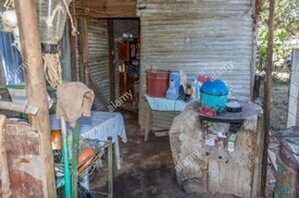 After an exhausting four hour relentless climb, with not a moment's pause, we stop at a small shop which has a room with two straw mattresses in it. It is here we spend the night.
After an exhausting four hour relentless climb, with not a moment's pause, we stop at a small shop which has a room with two straw mattresses in it. It is here we spend the night. 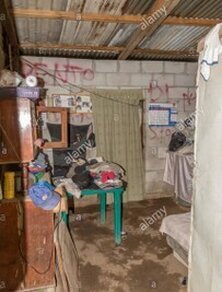 By now it is dark and a thick mist has come down. We are soaked to the skin and in need of a good fire to dry us out.
By now it is dark and a thick mist has come down. We are soaked to the skin and in need of a good fire to dry us out.Unfortunately the stove in the kitchen gives out more smoke than heat. So, after a supper that I can't manage to eat, we take off our wet clothes and hang them out before crawling under the quilt.
My whole body tingles, but I decide to ignore it and try to sleep. Sleep doesn't come. I peep out of the windows anxiously awaiting the first sign of dawn. As soon as I see a glimmer of light, I get up in the hope of beating the others to be able to have a proper wash instead of the usual 'face-only' one. 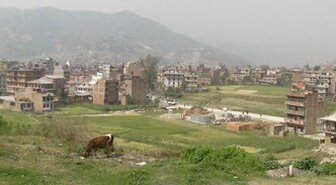 What a vain hope: the family whose guests we are is already up and about and there are already people setting off down the valley.
What a vain hope: the family whose guests we are is already up and about and there are already people setting off down the valley.
 What a vain hope: the family whose guests we are is already up and about and there are already people setting off down the valley.
What a vain hope: the family whose guests we are is already up and about and there are already people setting off down the valley.I collect my clothes that I had hung out on the verandah last night hoping that they would somehow dry. They are dripping. I get into them all the same and go down for some tea.
The mist is really thick and the humidity very high. Coming to the Himalayas at this time of the year calls for an iron will and constitution!
We set out again around ten, the rain having replaced the mist. About three hours later we reach Shermatang and Laghkpa's house where we find his aunt who is a Buddhist nun.

The house consists of a ground floor store room and a single room on a mezzanine floor. The furniture is basic: two beds, a dresser and a small stove. Prior to the family moving to Katmandu, twelve people lived in this one room.
We are offered Tibetan tea while the potatoes are cooking. Perhaps because the firewood is damp, or perhaps because the stove has an inefficient flue and there's little draught, the atmosphere is so smoky that it makes the eyes burn.
In no time at all news gets around in the village that Laghkpa, Didi and two foreigners have arrived and everyone, friends and relatives, come to say hello.
Kelly and I take it in turns to go to the spring and draw water for the tea and to wash the cups and plates. At the rate of today's visits, this soon becomes a full-time job.
These Sherpas, distant cousins of those more authentic ones of Solu Kumbu, are cheerful and talkative: despite the language barrier, they manage to involve us in the conversation and fire all sorts of questions at us. By seven o'clock it's already dark and we eat rice and lentils by the light of a small candle. Towards ten we retire. Tomorrow we have an early start.
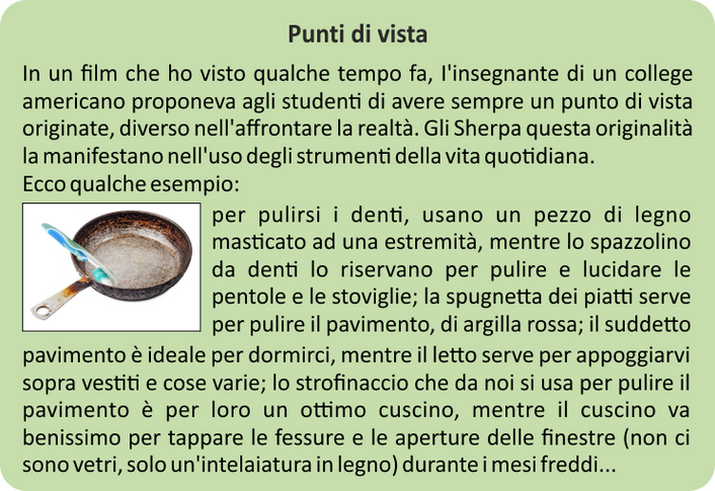
FIRST IMPRESSIONS OF THE HELAMBU SHERPAS
(they call themselves Sherpas, but really they are Bhotiyas)
In a film I saw some time ago, the teacher in an American college suggested to his students that they should always have an original and different point of view when facing reality.
The Sherpas show this kind of originality in their use of the tools and gadgets of everyday life. Here are just a few examples:
they use a piece of wood chewed at one end to clean their teeth, while their toothbrushes are kept for cleaning and shining the pots and pans; the sponge for washing the dishes is used to clean the red clay floor; the aforesaid floor is ideal for sleeping on, while the bed can be used to rest clothes and sundry other items on; the floor cloths are, for them, a perfect cushion, while the cushion makes a very good stopper for the cracks and the window openings – there's no glass in the windows, just the wooden framework – during the colder months . . . and so forth!
July 24 th Tarke Gyiang
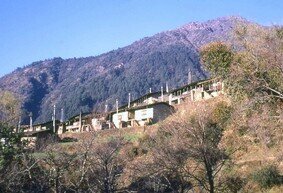 Awake at 5 a.m. Outside all is dark and foggy.
Awake at 5 a.m. Outside all is dark and foggy.We drink two cups of tea, eat two boiled potatoes and are off to the vegetable patch to dig up some more.
When you read in guide books that the core ingredient of the Sherpas' diet is the potato, you don't really realise just how literally true this is!
Our duty done, we set off for Tarke Gyiang, a large village at 2,747 metres above sea level and the seat of a Buddhist temple and monastery.

Along the way I learn more new things. Yesterday Laghkpa said that whenever we came across any'chortens' we must leave them to our left. Today we come across little 'stupas' and we have to walk round them three times anticlockwise before going on our way. We see yaks immersed 'up to their nostrils' in pools either side of our path. How I envy them!
No breaks for us; it is imperative to steam ahead non-stop!
When there is a break in the clouds, we get a glimpse of the peaks of Langtang Himal. We reach Tarke Gyiang where we visit (at a charge) the Buddhist temple, drink some tea and pay the outrageous sum of 30 rupees for 3 chapatis which are so disgusting as to be uneatable.
It is now two o'clock in the afternoon and pouring with rain: we decide to go on to Malemchigaon. We would like to get as far as the area of the Lakes: Gosainkund, Saraswatikund, Bharabkund. Somewhere between Malemchigaon and Gopte we stop for the night at the home of a Tamang family.
July 25th
We are counting on arriving at Gopte, 3,430 metres, today, and then, once there, deciding what to do. In order to reach the lakes we have to go over a pass at 4,600 metres and both Kelly and I have reservations about our chances of making it. We are not equipped for anything of that sort, given that this was decided when we were already at Shermatang, from where we had thought we would go on some brief excursions in the area, and not on these mountain climbs, that's for sure! My gym shoes look as though they are about to give up the ghost and I haven't even got a haversack, just a large bag of the kind that travel agencies supply their customers with.
Wisely we decide to change course.
Instead of trying to reach the lakes where, what's more, we would miss the Hindu pilgrimage by a few days, we decide to go back to Tarke Gyiang and from there go down to Kakani, Kiul and Taramarang, along the Malemchi Khola Valley.
The landscape is somehow reminiscent of that between Shermatang and Tarke Gyiang, which I am already familiar with and love: oak woods and daphne, the oak bark being used to make cellulose, and great swathes of immense rhododendrons, while the song of unfamiliar birds accompanies us on our descent.
Laghkpa was petrified by the idea that we might run into bears, especially towards evening, while on the contrary I would have loved to see one, but not at close quarters, that is.

August 1st On the road to Pokhara
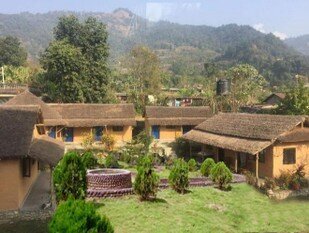 Eight delightful hours spent in conversation with Werner, a German from Stuttgart and a teacher of religious education in a secondary school. I already know the road as far as Mugling as it's the one I travelled along on the way to Janakpur. This time, however, it's drier and travelling is easier. The second part of the journey is through a beautiful area of hills, trees and paddy-fields.
Eight delightful hours spent in conversation with Werner, a German from Stuttgart and a teacher of religious education in a secondary school. I already know the road as far as Mugling as it's the one I travelled along on the way to Janakpur. This time, however, it's drier and travelling is easier. The second part of the journey is through a beautiful area of hills, trees and paddy-fields.Being with Werner on arrival means I am able to avoid being subjected all alone to the assault of guest house vendors. A man on a cart pulled by a horse is passing at that moment and Werner stops him and negotiates a price for a ride to Lakeside.
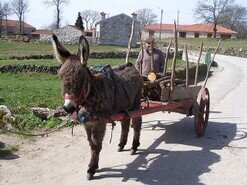 I'm amazed yet again: this man looks more like a peasant who was going about his business, rather than someone whose job is taxiing tourists around on his cart. Anyway, we get on and the old jade sets off at a pace which is little more than standstill! Along the road we meet a Japanese man and ask whether he is heading for Lakeside too, and would he like to share our rather unusual means of transport. He joins us and we set off again.
I'm amazed yet again: this man looks more like a peasant who was going about his business, rather than someone whose job is taxiing tourists around on his cart. Anyway, we get on and the old jade sets off at a pace which is little more than standstill! Along the road we meet a Japanese man and ask whether he is heading for Lakeside too, and would he like to share our rather unusual means of transport. He joins us and we set off again.Both the Japanese man and Werner have various guest house addresses. The first address – one of Werner's – is not to our liking; the second – suggested by our Japanese companion – can't be found. In the end we choose the Butterfly guest house which we find in my guide book: very basic, inexpensive and with a nice garden. However, the Japanese man, whose requirements are more pretentious, opts for one nearby which is grander and more expensive.
After a quick shower, I go out to a restaurant recommended to us by the guest house owner with our Japanese friend, while Werner stays behind to smoke hashish with an American girl who is another of the hotel guests.
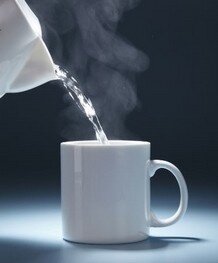 The saying 'When in Rome do as the Romans do' might be re-phrased 'When in Japan . . ! with what happens now. From the menu we choose lake trout and a large bottle of beer to be shared between us. As soon as they bring the beer, my Japanese friend pours me a glass [which, once the froth settles, is only half a glass] and then proceeds to drain the rest of the bottle himself in huge gulps. When the fish arrives there is nothing left to drink. This fellow is not without resources, though, and heads determinedly for the bar, and while I mistakenly entertain the idea that he has gone to order another beer, he comes back with a glass of boiling water in his hand which he puts down before me. “What's that for?” I ask. “It's for you”, he replies, “to drink with the fish; it's safe!”
The saying 'When in Rome do as the Romans do' might be re-phrased 'When in Japan . . ! with what happens now. From the menu we choose lake trout and a large bottle of beer to be shared between us. As soon as they bring the beer, my Japanese friend pours me a glass [which, once the froth settles, is only half a glass] and then proceeds to drain the rest of the bottle himself in huge gulps. When the fish arrives there is nothing left to drink. This fellow is not without resources, though, and heads determinedly for the bar, and while I mistakenly entertain the idea that he has gone to order another beer, he comes back with a glass of boiling water in his hand which he puts down before me. “What's that for?” I ask. “It's for you”, he replies, “to drink with the fish; it's safe!”How kind! After devouring the fish at a speed even greater than that at which he drank the beer, he jumps up again, all of a sudden: it's his jerky way of moving; he either stays perfectly still or he suddenly springs into action. It can be quite shocking. Now he seizes the mosquito repellent spiral which is smouldering on the floor near our table, and lights his cigarette from it and while I am patiently finishing the fish, which is full of small fish bones [did they all end up in my fish? or is he perhaps immune to them?], he blissfully smokes his cigarette.
His show ends when it is time to settle the bill: extraordinarily quick to calculate our parts fifty-fifty – despite having drunk almost all the beer himself – he determinedly fishes the change necessary to make up the sum of the bill from the palm of my hand. Not for nothing is he a professor of mathematics in Tokyo!
 They say that the Japanese who come here to Nepal are the not-so-well-off: those who can afford to do so come to Europe or go to the States. I don't know whether it is so, but what is true is that the Japanese one meets here are odd. There's the one who spends his days under the pergola of the Yeti restaurant drinking beer and wine from the early morning. Not very tall, but powerfully built, surely a practiser of martial arts. He treats his lovely five-year-old son arrogantly and sadistically. It is plain to see that the child is afraid of his father. This morning, while I was having breakfast, he arrived with his wife, his son and the taxi driver he has hired full-time.
They say that the Japanese who come here to Nepal are the not-so-well-off: those who can afford to do so come to Europe or go to the States. I don't know whether it is so, but what is true is that the Japanese one meets here are odd. There's the one who spends his days under the pergola of the Yeti restaurant drinking beer and wine from the early morning. Not very tall, but powerfully built, surely a practiser of martial arts. He treats his lovely five-year-old son arrogantly and sadistically. It is plain to see that the child is afraid of his father. This morning, while I was having breakfast, he arrived with his wife, his son and the taxi driver he has hired full-time.I was talking to a Nepalese boy and stroking the kitten he had on his lap. The Japanese boy who, for reasons best known only to himself, did not like my stroking the kitten, gave me a karate blow on the wrist, right on my wrist-watch. At this point, the boy's father, wanting to show off the power he had over his son, dragged him over to a pillar, pushed his face against it and ordered him not to move. My attempts to intervene on his son's behalf only served to spark his anger. “Mind your cat!”, he yelled at me, “This is my cat and I do whatever I like with him!”
When breakfast was over and it was time to go, he called his son, making him jump to attention. He shouted harsh phrases, in military tone, to which his son replied contritely, his head bowed. He took hold of his son's head under the chin and lifted his face in order to give him two loud slaps before pushing him into the car. His son didn't shed a single tear him: it must have required a tremendous effort, the slaps were painful, but he plucked up courage and held back the tears. Fruit of a repressive upbringing or are we really genetically different?
I later learned that this man habitually used violence not only on his son, but also on his wife and on the Nepalese he crossed and with whom he used blows to settle accounts. One morning I saw the owner of this same Yeti restaurant arriving covered in bruises, with front teeth missing and without his usual sunglasses. He told me that the previous evening, being the worse for drink and drugs himself too, he had quarrelled with the Japanese fellow and they had come to blows down by the lakeside. The Japanese had thrown him into the lake and had held his head under the water in an attempt to drown him. “Dangerous man!” he added “very dangerous!”.
August 15th Sarangkhot

At six, as usual, I go to have breakfast, alone. There's a large group of Italians at the guest house with whom I share my days, but this is decidedly too early in the morning for them. Last night one of the Italians, a Neapolitan, having heard that I'm in the habit of getting up at five o'clock in the morning, remarked: “But you must be sick in the head!”.[16] Instead I find the early morning hours the best part of the day: there isn't that heat that from ten in the morning till six in the evening saps your energy, there's silence, peace . . . . .
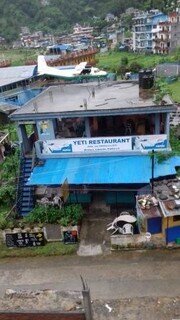 In any event, at the Yeti restaurant I find Valerie who's having breakfast whilst waiting for the bus back to Katmandu. [I shall run into her again in New Delhi a fortnight later]. On consulting the seven page menu we are undecided between the 'light set', the 'heavy set', the 'Mexican set', the 'German set' and some other dozens of 'sets' . . . . . I glance at the book she's reading: the author's name is Dahl. Easy pun: Dahl for the spirit after so much dhal for the body!
In any event, at the Yeti restaurant I find Valerie who's having breakfast whilst waiting for the bus back to Katmandu. [I shall run into her again in New Delhi a fortnight later]. On consulting the seven page menu we are undecided between the 'light set', the 'heavy set', the 'Mexican set', the 'German set' and some other dozens of 'sets' . . . . . I glance at the book she's reading: the author's name is Dahl. Easy pun: Dahl for the spirit after so much dhal for the body!It seems that the knee-breaking treks of Langtang are not enough for me. Yesterday I arranged with a local guide to be accompanied to Sarangkhot. This involves a climb to 1,600 metres along a very regular and well-kept flight of steps, to a look-out point from which it's possible to admire the Annapurna chain of mountains. There's also the ruins of a fort, 'kot' in Nepalese.

On our way down, from the northern slope, some teachers from a primary school approach me to ask if I would like to make an offer of money to help the school, which is not financed by the state. I hand over 200 rupees, perfectly aware of the futility of my gesture.
August 16th Kahun Danda
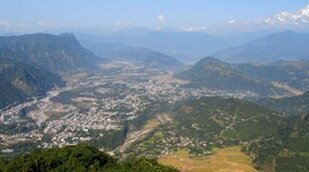 Kahun Danda lies to the east of Pokhara bazaar. In Nepalese 'danda' means mountain chain.
Kahun Danda lies to the east of Pokhara bazaar. In Nepalese 'danda' means mountain chain.We take the bus to Mahendra pul, we cross Phulbari and from there climb to the top. Here there are the ruins of a fortified tower in which millions of flies reside.
“Flies guest house!” my guide says. Is this a joke of his own or has he heard it from some other foreigner he brought up here previously?
August 17th Mahendra Gufa
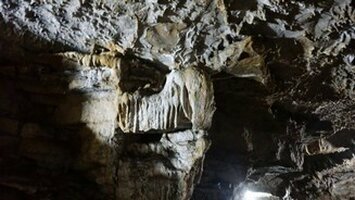 This lies to the north of Pokhara. We take the usual bus and then walk the final stretch in torrential rain.
This lies to the north of Pokhara. We take the usual bus and then walk the final stretch in torrential rain.At the ticket booth they try to make us take a guide for the caves. Marcello, my Roman companion of misfortune, is about to give in, but I, having read my Rough Guide [one of the four guide books I always have with me], don't think it's necessary. It should be a small cave. In fact: we can scarcely believe that such a small ugly 'hole' can be included in a guide book. It's pouring even inside. When I slip on the damp ground my dreadful curse echoes around the 'cave'. It is at this point that I realise just how much fear I've been keeping bottled up inside me since the two frightful falls, which could have had fatal consequences, during our trekking.
I read my Rough Guide more carefully: these caves were famous for their limestone stalactites, which have all been taken by vandals, though. There's another cave near here, but, the guide book says, it is more dangerous and for 'serious spelunkers only'. Let's forget it! I'm more interested in going to Batulechaur, a village famous for its 'gaines', a kilometre from here. The 'gaines' are minstrels who sing serenades at ceremonies, accompanied by the sarangi.
A local youth takes us to a house with a small porch. The head of the family emerges, instrument in hand. In a few minutes, a crowd of men and women, old and young, all singing, gathers around us. I begin to suspect the worst and I say so to Marcello.
Because, after so many journeys in Asia, Africa and South America, I am nobody's fool, I tell our local guide that we have no intention of paying out a huge sum for their songs. Also because he keeps repeating and stressing that the owner of this house goes frequently to play in the hotels at Lakeside [including the Fish Tail, $150 a night, do you know!] and he is very successful.
Given that every Nepalese firmly believes that all tourists are wealthy, you often find yourself faced with requests for money, which would be ridiculous if they were not in fact deadly earnest.
Despite my having been explicit, the final request is for $20.
“Okay”, I reply, calmly with a smile, “however, you will have to take into consideration the cost of my own performance, which is $25. Which means you owe me $5, but I'm willing to wave that.”
In fact I, too, had pulled out my repertoire of Italo-Nepalese songs and had started to sing!
Then, I put my shoes back on with great dignity and left.
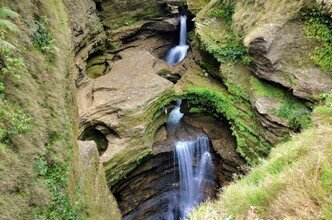 Before going back to the hotel, we went to see the waterfall they call Fadke or Devin's/David's Falls, a couple of kilometres south of the airport. David, from the name of a tourist who fell into the falls with his girlfriend, so we are told.
Before going back to the hotel, we went to see the waterfall they call Fadke or Devin's/David's Falls, a couple of kilometres south of the airport. David, from the name of a tourist who fell into the falls with his girlfriend, so we are told.The falls are, in fact, an underground river which emerges just before falling into another river, and at the point where the falls are the river goes down into a hole in the earth and disappears.
This waterfall is close to a refugee camp for Tibetans: the women leave the camp in the morning and pester tourists all day long to buy their products.
The village is called Tashiling Tibetan and, surprise, surprise, working the looms there are numerous Nepalese! When there is unpleasant, boring, laborious work to be palmed off on those who are less fortunate, all the world is the same!
August 18th Tomato shampoo
Well, yes: today has marked the end of both my umbrella and my gym shoes. The umbrella has been my faithful travelling companion for fifteen years, sheltering me from time to time from the rain in China, Russia, America...
The gym shoes, bought in Genoa ten years ago, have accompanied me a bit in all the continents. Although they are practically in pieces, Prem, my Nepalese guide, has asked if he can have them. He says he will sew them up again and wear them. Actually those he's got on his feet at the moment are even more the worse for wear than mine! As this is the only pair of shoes I've got, before giving them away I have to acquire another pair. I've seen sports shops near the bus station.
I borrow Govindan's bike and go. It's a bit windy today and so, thanks to the uphill road and the weight of this Indian bike, I arrive at the shop panting.
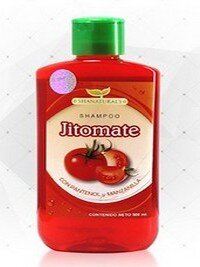 For 165 rupees I buy a Chinese umbrella which breaks two hours later; for 600 rupees I buy another pair of 'Adidas' gym shoes. Could they be genuine 'Adidas'? In Italy they would cost four times as much. Caught in a consumer raptus, I buy a dozen sponge rings for my hair. They cost one rupee each: thirty lira!
For 165 rupees I buy a Chinese umbrella which breaks two hours later; for 600 rupees I buy another pair of 'Adidas' gym shoes. Could they be genuine 'Adidas'? In Italy they would cost four times as much. Caught in a consumer raptus, I buy a dozen sponge rings for my hair. They cost one rupee each: thirty lira!And this isn't the end of my spending spree: on my way back to the guest house, I stop and go into the lake-front shops to buy some 'Timotei' shampoo. It doesn't seem to be so easy to find: I've already searched for some in vain on previous days. In about the fifth shop I enter, the owner answers my enquiry with another question: “You want a tomato shampoo?”, without in the least losing his composure, unlike myself struggling to hold back my laughter.
Almost electronic scales... or, the art of managing.
The usual little lady brings her carp fish to the Yeti restaurant. The one she has today weighs several kilos and she has just one weight of one kilo. So she picks up the largest stones she can find lying around on the ground, weighs them, then uses them as weights adding them to the one true weight she has. The fish, weighed in this original way, is just over five kilos.
Marcello and I reserve it for dinner, grilled, certain that it will be brought to us cooked in exactly the same way as yesterday when we ordered it steamed, and as the previous day when we asked for it to be baked. In fact the various ways of cooking it only exist on the menu. In reality it is always stewed, covered in a thick layer of sauce, sauce which we have regularly asked them not to put on the fish, but to
no avail.
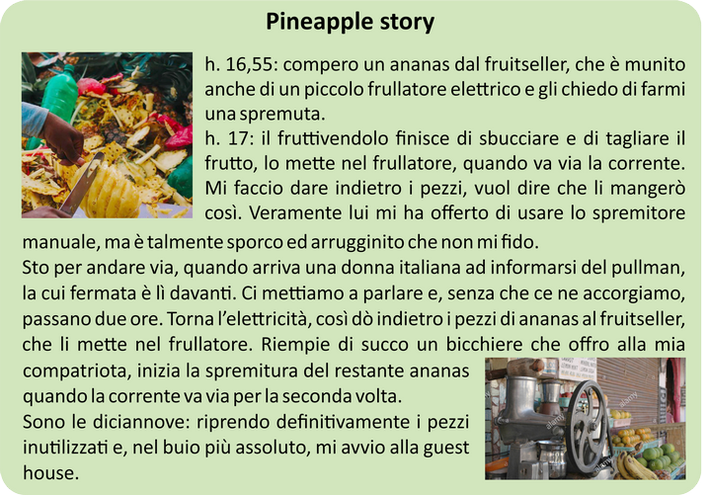
August 20th On the road to Tansen
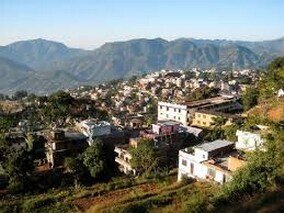 Today is a beautiful sunny day, which highlights the lushness of the scenery. I am the only foreigner on the bus, despite the fact that this is a tourist route since the road links Pokhara to Sunauli in India. None of the tourists, though, makes the detour of a few kilometres from the main road to Tansen. This, after all, is for the good because it means that the town has remained unspoilt, with its authentic life, untouched by the all-destroying, all-corrupting tourism.
Today is a beautiful sunny day, which highlights the lushness of the scenery. I am the only foreigner on the bus, despite the fact that this is a tourist route since the road links Pokhara to Sunauli in India. None of the tourists, though, makes the detour of a few kilometres from the main road to Tansen. This, after all, is for the good because it means that the town has remained unspoilt, with its authentic life, untouched by the all-destroying, all-corrupting tourism.The bus acts as the postal service and this does nothing to accelerate our average speed, which, I believe, is around thirty kilometres an hour. As soon as we arrive in the various villages the bus driver's assistant slings the blue postal sack, with all the correspondence in it, out of the bus window and catches the one thrown to him by the man waiting for us in the village.
After about three hours' travelling, I see the same driver's assistant arm himself with a stick. This stick is generally used to clear the road and make way for the bus when there are flocks or herds blocking the way. But this time the stick has quite a different use: along the road there are swarms of schoolchildren who clamber agilely up onto the roof of the bus to get a free ride to school, the school which, strangely, is out in the country some distance from the village. Leaning out of the rear door of the bus, the driver's assistant manages to take his stick to the children and stop them climbing onto the roof.
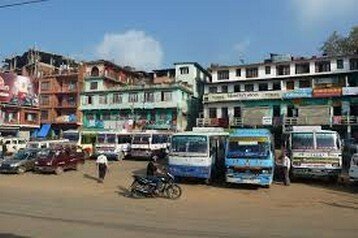 We get to Tansen in the late afternoon. The hotel recommended by 'Lonely Planet' is right on the square that doubles as a bus station. I go in: the receptionist is fast asleep. I try calling him, shaking him, but nothing succeeds in waking him. This is a phenomenon I've already come across several times in India: the sleep of these Indians is a kind of coma, from which it is extremely difficult to bring them back to a state of consciousness.
We get to Tansen in the late afternoon. The hotel recommended by 'Lonely Planet' is right on the square that doubles as a bus station. I go in: the receptionist is fast asleep. I try calling him, shaking him, but nothing succeeds in waking him. This is a phenomenon I've already come across several times in India: the sleep of these Indians is a kind of coma, from which it is extremely difficult to bring them back to a state of consciousness.I am about to give up and go to the other hotel recommended, which, though, is quite some distance from the village and also quite expensive, when a middle-aged woman, rather plump and quiet looking, arrives and pulls me inside again by the sleeve. She speaks not one word of English, but she goes to call the owner of a shoe shop under the hotel and, partly by words and partly by gestures, we manage to understand each other. They show me the room: it is one of the filthiest I've ever seen, and also noisy because of the buses which are right outside. I decide to stay anyway and never did I make a happier decision. In fact, I've spent some of the most enjoyable days of my stay in Nepal, in this very hotel. The owners of the hotel turned out to be delightful people, so kind and friendly. Yes, there was a lot of dirt, but this is explained by the fact that is intended for the Nepalese and not for tourists, and Nepalese standards of cleanliness are what they are...
For instance: the room next to mine was occupied by what surely was a honeymoon couple, who at night when the noise from the buses tended to die down, saw to it that I was kept awake by unmistakeable noises... What's more, they had brought with them, willy nilly, about fifteen family members, between the ages of ten and eighty, who were all camped in one room on the other side of the corridor.
I think, however, that the privacy the separate rooms guaranteed the newly-weds was an exceptional circumstance in the life of a Nepalese... I was saying about cleanliness: well, I glimpsed the rooms occupied by these Nepalese and I can assure you the sight was disgusting. A layer of rubbish of all kinds [fruit peel and cores, rice, left overs of vegetables and sauces, ash and cigarette butts, waste paper, chewed betel with respective spittle . . .] covering the floor like a thick carpet. So it is quite understandable that even after this mountain of rubbish has been removed, the state of the rooms remains what it is. Not to mention the sheets . . .
In the evening when I went down into the restaurant, who should I find there but Ante Tokic, a twenty-three year old Croat who biked here from Croatia crossing Greece, Turkey, Iran, Iraq, Pakistan and India.
This Croat, almost two metres tall, is a naval engineer and has fled his country because of the war. I ask for news of Croatia, not having heard anything since leaving Italy, almost two months ago. He spoke to his brother last night and the news is tragic. The war rages and there are numerous dead, among which civilians, and including some of his friends and relatives. His brother is about to flee the country too, to seek his fortune in the United States where they are planning to meet up again. I can imagine the desperation of this and many other families that have been forced by the war to split up and disperse.
We spend three days together: the first day we go to Rani ghat, the second into the Shrinagar hills, and the third we spend visiting the missionary hospital and going around Tansen.
August 21st
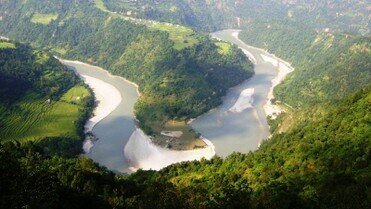 At last I've found someone else with my rhythms. At 5.30 a.m. We are already out in the street, even though it is still dark. The bus station square is lively, the tea shops are open. We have a 'curd' and some tea before setting off. The walk is delightful, slightly downhill [at last!] and the countryside around us is varied and beautiful. There are numerous streams to cross: at first I take off my shoes and socks and cross bare foot so as to keep dry, but then the crossings become so frequent that I tire of undoing and doing up shoe laces and give up, wading through as I am. As a rule the water is never more than knee-deep, it's only when we cross a tributary of the Kali Ghandaki, on our arrival, that the water comes up to my waist.
At last I've found someone else with my rhythms. At 5.30 a.m. We are already out in the street, even though it is still dark. The bus station square is lively, the tea shops are open. We have a 'curd' and some tea before setting off. The walk is delightful, slightly downhill [at last!] and the countryside around us is varied and beautiful. There are numerous streams to cross: at first I take off my shoes and socks and cross bare foot so as to keep dry, but then the crossings become so frequent that I tire of undoing and doing up shoe laces and give up, wading through as I am. As a rule the water is never more than knee-deep, it's only when we cross a tributary of the Kali Ghandaki, on our arrival, that the water comes up to my waist.Anyhow it was well worth it: this huge palace built for the last Rana in neo-classic style but now,alas, in ruins, is fascinating. And the countryside we came through to get here is equally so in its alternation of tropical plants, paddy fields, waterfalls and small villages.

I can well imagine the effort required to bring all the building material here, I wonder whether they transported everything along the river. A Nepalese man informs us that, should we be interested, in a few years' time we could buy the palace, seeing that the one hundred years required by law in order for the property to change hands and be bought by a private owner, will have passed.
August 22nd
One of the nice things about waking in the morning, something which only happens to me when I'm on holiday, is to find some song going round in my head, a tune that somehow has surfaced in my mind by who knows what interior route. This morning it's the turn of 'As Time Goes By'. Could the reason be not psychoanalytical at all but rather to be found in the fact that yesterday I saw a Nepalese bunged into the film 'Casablanca' as Humphrey Bogart?
I get up humming this wonderful tune to myself. It's a quarter to five, it's cold, outside it's pouring with rain. I walk round the hotel, everyone's still sleeping. I need the toilet, but the one on my floor is out of use because it's being restructured. I go up to the next floor, but between the corridor and the toilets there's a room which is occupied by the Nepalese and they are still sleeping. Down in reception they have told me to have no scruples about waking them, but I don't dare. I'd love to go and have a cup of tea to warm me, but first I need a toilet.
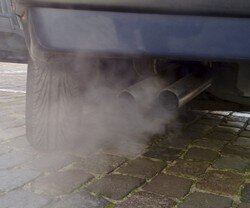 Eventually the people in the room wake and get up, so I can at last use the bathroom, and then I make a beeline for the tea shop. The bus station is livelier than ever. This is the time when the drivers of the various departing buses give vent to their wildest passion: that of stepping hard on the accelerator to make the engine run as fast as possible, sending out clouds of fumes and a deafening noise. To escape this kind of torture, I think I'll make the most of my free time this morning [this afternoon I'm going into the Shrinagar Hills with Tokic and Siddharta] to go and see the Cottage Industries. These are part of a foreign aid project and, judging by the placard on the main road advertising them, they are a recent creation.
Eventually the people in the room wake and get up, so I can at last use the bathroom, and then I make a beeline for the tea shop. The bus station is livelier than ever. This is the time when the drivers of the various departing buses give vent to their wildest passion: that of stepping hard on the accelerator to make the engine run as fast as possible, sending out clouds of fumes and a deafening noise. To escape this kind of torture, I think I'll make the most of my free time this morning [this afternoon I'm going into the Shrinagar Hills with Tokic and Siddharta] to go and see the Cottage Industries. These are part of a foreign aid project and, judging by the placard on the main road advertising them, they are a recent creation.Coming to see for myself some of these projects of cooperation with developing countries, was one of the motives for my journey in Nepal. Before leaving on this trip I had read several things, one of which was the interesting book by Charlie Pye-Smith 'Travels in Nepal – The Sequestered Kingdom'. Other things I read in the British Library in Katmandu. Discouraging: here are the aims that the first American projects set themselves in the 1950s:
1) increased production of food, fibre and housing material
[also to have an exportable surplus];
2) elimination of disease;
3) school for all;
4) sufficient roads to move agricultural and industrial products;
5) hydro-electricity for enough light and irrigation;
6) reforestation;
7) landownership to the tiller;
8) agricultural credit system;
9) development of sense of unity, of love of liberty, respect of the individual.
One could hardly say that any of these aims have been achieved!
Among the comments made below this list of aims, there is the following: “in a Hindu society not only would life always be as it had been, but any attempt to interfere with the unchanging cycle of life would be sacrilegious”. As the first obstacle to be overcome, that's not bad! I believe this sentence sums up the difficulties for a continually changing culture like ours to relate in a correct and respectful way to an unmoving culture like the Nepalese one. Unfortunately foreign interventions, instead of bearing this situation in mind, have superimposed and also imposed, with the effect of sweeping away their values and obtaining disastrous results.
It suffice to say that many of these projects, instead of stimulating activities, have created an economic dependence, getting the local population used to receiving money, without the corresponding work. That is why in another interesting book, 'Foreign Aid and Politics in Nepal' by Eugene Bramer Mihaly, taking stock of foreign intervention, the final summing up is this:
“The impact of foreign aid has probably harmed rather than furthered Nepal's long-range prospects for economic growth and political stability.”
I get into bed, covering myself with the pashmina I've bought and with the filthy quilt. The latter is so smelly that unless I recover quickly from this sudden illness, I shall most probably suffocate. For the moment it dulls my senses and I fall asleep.
I wake again around midday, it's beautifully sunny outside. I get up and go in search of Ante and Siddharta and we set out for the Shrinagar Hills. First, though, Ante wants to drink his usual daily ration of whey.
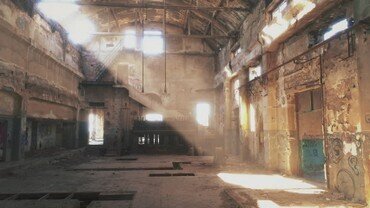 There's a delightful breeze, which revives me. We sit for a while in the shade of some pine trees. Two Nepalese boys in school uniform come and sit down near us. We start talking and we ask them some questions, but their English is not good at all. They show me their English books and I can see that the texts are geared to people who already have a good knowledge of the language: passages from literature, from social analyses, and from history, followed by very demanding questions to which they also have to give written replies. I ask them who has written the answers and they say that they themselves have done so. I don't believe them: most Nepalese buy second-hand school books and this is the only obvious explanation for the discrepancy between their very scant knowledge of English and the knowledge needed to answer the questions.
There's a delightful breeze, which revives me. We sit for a while in the shade of some pine trees. Two Nepalese boys in school uniform come and sit down near us. We start talking and we ask them some questions, but their English is not good at all. They show me their English books and I can see that the texts are geared to people who already have a good knowledge of the language: passages from literature, from social analyses, and from history, followed by very demanding questions to which they also have to give written replies. I ask them who has written the answers and they say that they themselves have done so. I don't believe them: most Nepalese buy second-hand school books and this is the only obvious explanation for the discrepancy between their very scant knowledge of English and the knowledge needed to answer the questions.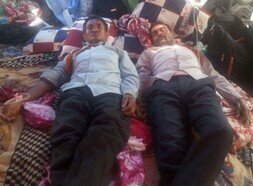 We set off again. These hills, once wooded, are now almost completely bare except for some pine woods. Alas, the high rate of demographic growth in Nepal has led to intensive exploitation of all the country's resources, with timber in first place. Unless a reforestation programme on a grand scale is started very soon, in a few years from now the damage will be irreparable.
We set off again. These hills, once wooded, are now almost completely bare except for some pine woods. Alas, the high rate of demographic growth in Nepal has led to intensive exploitation of all the country's resources, with timber in first place. Unless a reforestation programme on a grand scale is started very soon, in a few years from now the damage will be irreparable.We go through a tiny village. In one of the houses there's an old lady who is weaving by hand, and also by 'foot' [seeing that she's using the big toe of her right foot to keep the warp taut], those strips that they apply to their baskets in order to carry them 'hung' on their foreheads. I buy two for ten rupees; the colours are magnificent, I shall join them to make a belt.
A bit further on a delicious smell comes wafting through the air: a woman is cooking mushrooms for the family. Scornful of danger, Tokic and I send Siddharta to ask the woman if we can have three small portions. Smiling, she agrees.
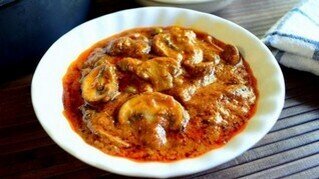 I'm increasingly won over by these simple, kind people who greet and satisfy the 'strange' requests of foreigners with a smile. How many of us Italians would do the same towards foreigners?
I'm increasingly won over by these simple, kind people who greet and satisfy the 'strange' requests of foreigners with a smile. How many of us Italians would do the same towards foreigners?In spite of their colour, which is that of our poisonous mushrooms, the taste is excellent. And, after so much rice and lentils, I appreciate them even more.
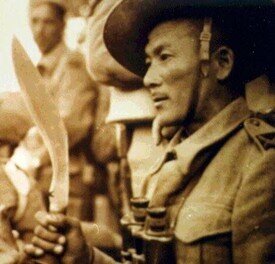 We are about to go on our way, when a Nepalese man with a military step arrives.
We are about to go on our way, when a Nepalese man with a military step arrives.I get Siddharta to ask him whether he has been in the Gurkhas.
“Yes,” he replies, looking surprised, “how did you guess?”.
I later discover that he is as drunk as a lord, with 'chang', a fact which,however, does not at all affect his balance in moving and walking over this uneven terrain. Regardless of all the alcohol he has already downed, he asks a woman who runs a sort of tea shop for another glass.
“She ought not to give it to me”, he says looking surreptitiously around, “it's illegal!”. And he makes me promise that I won't say anything about what I've seen to anyone.
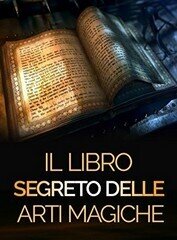 I have to admit that I amused myself a bit at this man's expense. Seeing that he was impressed by the fact that I guessed something about his past and because he's not fully with it, I answered his questions paradoxically and deliberately exaggerating things. When he enquired about my age, I told him I was fifty-five. “How can that be possible”, he replied, “if my wife here is only thirty-five and yet she looks much older than you?”.
I have to admit that I amused myself a bit at this man's expense. Seeing that he was impressed by the fact that I guessed something about his past and because he's not fully with it, I answered his questions paradoxically and deliberately exaggerating things. When he enquired about my age, I told him I was fifty-five. “How can that be possible”, he replied, “if my wife here is only thirty-five and yet she looks much older than you?”.So then I made him believe that it was thanks to my magic skills that I kept young. In a country like Nepal where magic plays an important part in everyday life, it's relatively easy to make people believe such a thing. “Why then don't you use your magic art on my wife and rejuvenate her a bit?”, he asks. “My magic powers have very definite territorial limits, unfortunately”, I reply, “the good spirits that help me lose their power once they go outside the borders of my own country.”
A large group of Nepalese, men and women, laden like mules with sacks of rice and salt come into sight. We decide to go along with them as we are headed in the same direction. When they are obliged to stop, exhausted, needing to catch their breath, they look us in the eyes and their features, drawn by the effort, relax into a marvellous smile, almost as if apologising for their limitations.
We've been walking for three hours now and we decide to turn back. I stop to photograph some lovely sculpted stone graves in Anglo-Saxon style. A cemetery for foreigners or for rich Nepalese with a craze for things Western?
In Tansen, Tokic goes to collect a huge Croatian flag; one he ordered from a studio of local artists. He intends to use it for the photos he will have taken at the various stops he'll be making on his journey around the world.
August 23rd
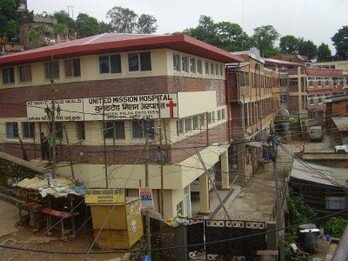 Today we are going to the Missionary Hospital 'United Mission'. It is some distance from the village, in an attractive valley and the road there goes through varied and interesting countryside. I'd really like to be able to give you an idea of it by giving an accurate description which is not boring instead of a limited and repetitive one, which seems to be all I can ever manage.
Today we are going to the Missionary Hospital 'United Mission'. It is some distance from the village, in an attractive valley and the road there goes through varied and interesting countryside. I'd really like to be able to give you an idea of it by giving an accurate description which is not boring instead of a limited and repetitive one, which seems to be all I can ever manage.Each time I find myself needing to describe a scene, the following ditty comes to my mind: 'Son salito sul Gran Sasso, son rimasto ammutolito' [I climbed Big Rock mountain, I was struck dumb], which, although paradoxically, gives an idea of the difficulty of the undertaking.
It is only the truly great writers who are able to attempt the task of re-creating the emotions felt on seeing a certain landscape, by reconstructing it in words. And even they do not always succeed. I can remember on more than one occasion skipping pages of description in masterpieces of literature.
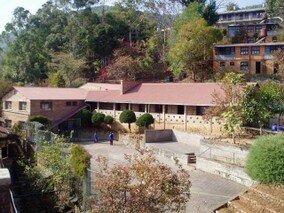 This is the time when the children come out of school: some of the older ones have climbed up onto the highest branches of a tree which stretches out over a precipice. I try to persuade them to come down, but they, in reply, laughingly throw a branch laden with fruit looking like our cherries, but far more sour and bitter, at me. It is precisely this fruit that they have climbed the tree for.
This is the time when the children come out of school: some of the older ones have climbed up onto the highest branches of a tree which stretches out over a precipice. I try to persuade them to come down, but they, in reply, laughingly throw a branch laden with fruit looking like our cherries, but far more sour and bitter, at me. It is precisely this fruit that they have climbed the tree for.We pass herds of cattle returning to the cow sheds to be milked, women carrying basins of clothes washed at the spring, hoisted onto their heads.
We arrive at the hospital. Outside there's a terrific throng of people, due to the fact that for each Nepalese admitted to hospital there are on average a score of relatives who stay around the area. To show solidarity, of course, but also to swap news with acquaintances, to arrange marriages and business. This, too, is an important social occasion!
We go in and while Ante asks to see the manager to enquire whether there might be some chance of a job, I look around for one of the European doctors.
I'm directed to Dr. Alison, Irish. She's extremely busy, but nevertheless politely answers my questions.
I ask her what the most common illnesses they have to treat are. “Gastroenteritis”, she replies, “tuberculosis and fractures.”
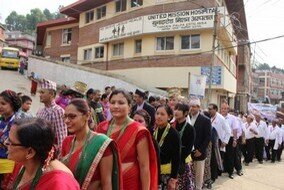 These conditions seem to me a true mirror of the conditions in which the Nepalese are obliged to live.
These conditions seem to me a true mirror of the conditions in which the Nepalese are obliged to live.Because she cannot give me more time now, she suggests I wait for her in the guest house of the hospital where I can drink tea while waiting, but Ante, who is disappointed that he hasn't found work, wants to leave. But what sort of work could there ever be for a naval engineer like him, here amongst the crocks?
August 24th Departure from Tansen
Alarm at five, at five thirty I'm at the bus station. I track down the bus for Pokhara, but it has broken down.
I adopt the national attitude, which is that of waiting. Seeing that at the ticket office no-one can tell me how long the wait might be, I, too, move over to the café where all the other passengers have collected.
A little thin Nepalese fellow, who looks only about eighteen but must be considerably older since he's an expert agricultural technician, suggests I go with him: his idea is to walk the two kilometres to the main road from Bhutwal, and wait there for the first bus, which shouldn't be a long wait. I check this out with an American who happens to be at the bus station. He confirms that it's a good idea, it's what he would do in the circumstances. So we set off down the most uneven, slippery, difficult path I have come across in my by now two months of walks in Nepal.
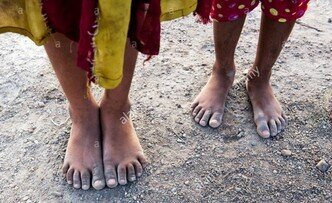 I manage to stay on my feet only by dint of proceeding very slowly and cautiously. Nepalese women, bare foot, pass me left and right. I observe their feet: they are quite different from ours, they are practically triangular, very wide at the front, with toes which are strong and prehensile and grip the ground well. We, with our little buttery feet, outcome of an 'evolution' [or involution?] towards 'civilisation', can't dream of keeping up with them!
I manage to stay on my feet only by dint of proceeding very slowly and cautiously. Nepalese women, bare foot, pass me left and right. I observe their feet: they are quite different from ours, they are practically triangular, very wide at the front, with toes which are strong and prehensile and grip the ground well. We, with our little buttery feet, outcome of an 'evolution' [or involution?] towards 'civilisation', can't dream of keeping up with them!My Nepalese cavalier walks half a metre or so in front of me, half turning around, ready to leap into a sort of rugby tackle should I slip.
When we are in sight of the main road, I suddenly hear the sound of a bus.
As Oman shows no sign of accelerating, “Quick!” I yell, “run down to the road and see whether it's our bus!”. In four leaps he's in the road. It is our bus, and, of course, it's packed.
But the kindness of my fellow traveller and companion in misfortune is such that, before leaving the bus, [he gets off after less than an hour of the journey] he finds out where the various seated passengers are going to. Then, he points out the one who will be getting off first, suggesting that I stand next to his seat, ready to take it when he gets up.
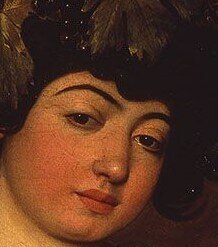 I look around me: the bus is the usual one crowded with schoolchildren with school bags in the same style as mine when I used to go to the primary school, women nursing babies, men with sacks and various goods just bought or to be sold.
I look around me: the bus is the usual one crowded with schoolchildren with school bags in the same style as mine when I used to go to the primary school, women nursing babies, men with sacks and various goods just bought or to be sold.At the same bus station where I manage to get a seat, someone comes aboard who, despite my careful scrutiny during the bus journey, I can't definitely make out as male or female. This person looks extraordinarily like Caravaggio's Bacchus, full face and black hair in a page boy cut. 'She' is handicapped and speaks with difficulty. She asks everyone for money. An old woman starts making fun of her, and soon the whole bus is laughing at her. She reacts in the only way she can, with a threatening expression and weakly punching the people who are mocking her.
This makes her even more the target of jeers: everyone laughingly avoids her fists and, still laughing pretends to return her punches to provoke her further. After a little more than an hour, this person, who was not asked to pay for a ticket, gets off the bus for no apparent reason. She probably left the bus in order to get away from all the mockery, but at the stop she looks around her in bewilderment, it seems that this stop or any other makes no difference to her, after all she has nowhere to go and no-one waiting for her to take care of her. In all likelihood she was abandoned by her parents, as happens to children of poor families, especially if they are handicapped. It's often the law of the jungle: anyone who is unable to go about providing for his own upkeep and not be a burden to the family from an early age, finds himself abandoned to his fate.
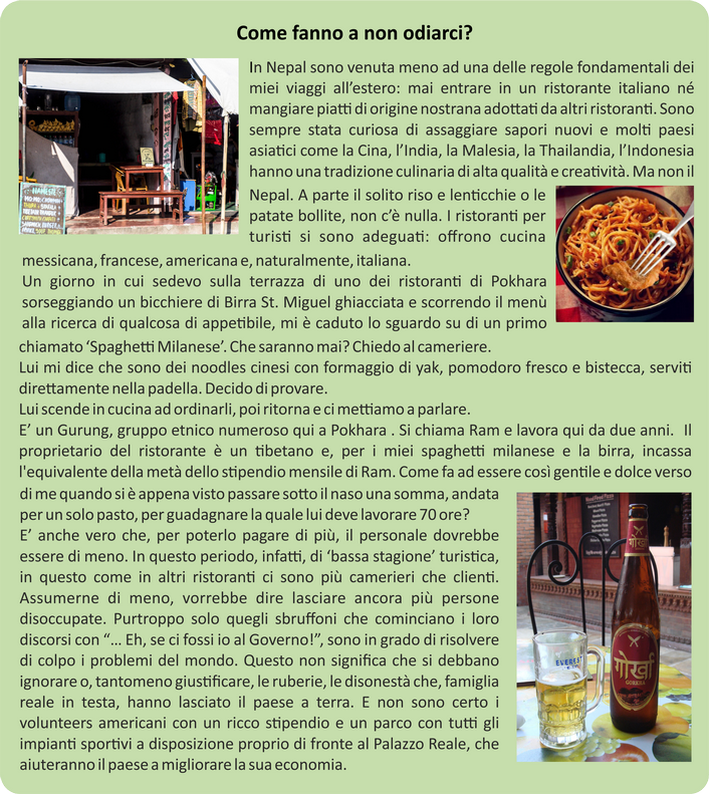
August 25th Return to Katmandu
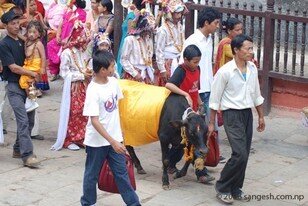 Celebration of the Cow Festival
Celebration of the Cow FestivalThe Cow Festival, called 'Gai Jatra' in Nepalese, is dedicated to all those who died the previous year. The Hindu believe that a cow will guide them to Yama, the god of the hereafter, and they consider it especially lucky to die holding the tail of a cow.
On the day of the festival the cows wander freely around the city adorned with garlands of flowers, and when there are not enough cows, children are disguised as them.
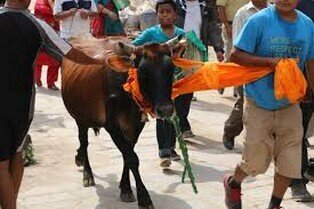 The festival also commemorates an event which occurred during the reign of Pratap Malla. The queen was sad, having lost her son, and the king offered rewards to anyone who could make her smile.
The festival also commemorates an event which occurred during the reign of Pratap Malla. The queen was sad, having lost her son, and the king offered rewards to anyone who could make her smile.The next day, a crowd of people went to the Royal Palace disguised in the most outlandish ways: the queen smiled and, ever since, on that day, all the people dress up in the strangest ways.
Characters met on my travels
At the Marco Polo guest house in Katmandu, there's a Parisian university student with ambitions to become a journalist. Gifted with enterprise - without, however, the necessary experience to go with it – ease of manner and pluck, he has been swindled in Bangkok by sellers of precious stones. In Katmandu misfortune continues to dog him.
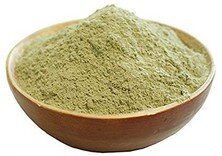
He has been suffering from diarrhoea for two weeks, and he has finished all the medicines he had and is no better. I give him some of my remedies, which equally produce no result. At this point I advise a natural remedy of huge doses of lemons [nimbu], garlic and Betonite clay, which I've brought with me from Italy.
Two days later the worst has passed. But his troubles are not yet over. On July 12th the Banque du Crédit Commercial goes bankrupt. He has with him only traveller's cheques from this bank, which now, obviously, no-one will accept any longer. He spends whole days between his Embassy, the Immigration Office [his visa has expired], banks, the International Telephones centre. Eventually a compromise is reached and the situation is solved, and he's able to leave for his solo trekking holiday on the Annapurna Massif. Let's hope all goes well!
In Pokhara, while I'm accompanying Ante Tokic, the Croatian I met in Tansen and who, having returned from Katmandu, has passed by here, to the bus station, a fellow on a bike approaches, looking rather breathless. He stops, gets off his bike and asks me if I speak French. When I say I do, he asks me to go with him into a trekking agency to help him understand what they are trying to tell him seeing that he doesn't speak English. I go with him and Ante waits outside for me. This fellow has in mind a short trek of three or four days, but not only does he have not the least idea regarding a possible itinerary he might like to follow but he knows nothing at all about the geography of Nepal.
I translate for him the routes the owner of the agency is suggesting he take; he chooses the shortest one and then says he has to go back to the hotel to get his money to pay the agency. He jumps on his bicycle and pedals off quickly. Did he ever go back I wonder?
In the restaurant I'm watching an Indian guru with a Western girl. I've seen others already. Usually the arrangement is: she pays the hotel, restaurant and other expenses, and he, in exchange, passes on to her the profound messages of the oriental philosophy, which provide for a simple life, perhaps a bit uncomfortable, but as long as it is only theory...
This guru has a wide-brimmed straw hat and is drinking tea leaving both the tea bag and the teaspoon in the cup. Drinking tea under these conditions becomes a highly acrobatic exercise. But isn't the guru perhaps someone who is beyond the conditioning of common folk?
One of my favourite pastimes is people-watching. That's why I get so bored in Pinerolo: 40,000 conformists have nothing interesting to offer the eye.
But here in Katmandu it's quite different. With Nima I am learning to distinguish people by their ethnic group. Something which is not at all easy!
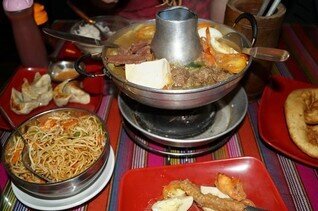
Jane and Ibrahim have decided to invite the Nepalese guide who has brought them back safe and sound from the Annapurna Circuit, to dinner. I go along with them; it's our last dinner together. We choose the Utze, a Tibetan restaurant. The guide tells us that a month ago, while he was on Annapurna, his wife gave birth to a baby boy.
“What will you call him?” I ask. He hasn't thought yet.
This reminds me of my father, who, five minutes before I was baptised still didn't know what name to give me. Not that my mother had any clearer idea than he did.
The story goes that it was a sister in the hospital who finally chose a name. I have never liked my name, but when I think that the sister might have had a weakness for names like Orsola, Veneranda, Adelaide or Ermelinda, I count myself lucky!
A friend who was in Nepal ten years ago, says that lepers could be seen in the streets with open wounds and bleeding flesh that fell in pieces in the street. I didn't see any of that. I did, however, see illnesses I've never seen anywhere else in the world.
I particularly remember, at the Pokhara bus station, a man whose face was just a mass of fleshy growths. In place of a nose, eyes, or a mouth there were spheres of flesh as big as golf balls. Where his mouth should have been a hole had been opened in these small mountains of flesh to enable him to feed himself. He was guided by a boy and was begging.
I've also had to learn to check my reactions when faced with unexpected deformations. Once, while we were in a restaurant in Pokhara and were looking over the menu that a boy had brought us, a woman came up to our table. When I looked up, I saw that her face was horrendously deformed by a hare-lip. The cleft, from her nose to her upper lip, was wider than I had ever seen or even imagined before.
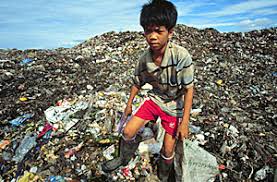 I often recall the beggars of Katmandu and the abandoned children who live in the street close to rubbish deposits.
I often recall the beggars of Katmandu and the abandoned children who live in the street close to rubbish deposits.I remember the paralytic man who was always outside the Immigration Office, passing point of many tourists. 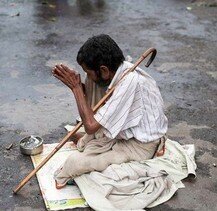 He was brought there towards nine o'clock in the morning and laid on the ground – his legs were completely atrophied – with an umbrella set up over his head to protect him from the sun and the rain. He was given a percussion instrument, a tambourine with a handle and two stoppers at the top of the strings. He kept turning this tambourine all day long, accelerating the movement each time a tourist came by.
He was brought there towards nine o'clock in the morning and laid on the ground – his legs were completely atrophied – with an umbrella set up over his head to protect him from the sun and the rain. He was given a percussion instrument, a tambourine with a handle and two stoppers at the top of the strings. He kept turning this tambourine all day long, accelerating the movement each time a tourist came by.
 He was brought there towards nine o'clock in the morning and laid on the ground – his legs were completely atrophied – with an umbrella set up over his head to protect him from the sun and the rain. He was given a percussion instrument, a tambourine with a handle and two stoppers at the top of the strings. He kept turning this tambourine all day long, accelerating the movement each time a tourist came by.
He was brought there towards nine o'clock in the morning and laid on the ground – his legs were completely atrophied – with an umbrella set up over his head to protect him from the sun and the rain. He was given a percussion instrument, a tambourine with a handle and two stoppers at the top of the strings. He kept turning this tambourine all day long, accelerating the movement each time a tourist came by.Pokhara – Butterfly guest house
3.00 p.m. : I'm in bed and dozing, to recover a bit from yesterday's walk to Mahendra Gufa. All of a sudden there are doors being slammed, enough to make the whole house shake, shouts, dreadful insults, things hurled out of first floor windows into the courtyard below [my room is on the ground floor]. What on earth's happening? I get up and go out to see: the couple from Como are having a bit of a squabble. Strong insults are being hurled by both parties, she's trying to shut him out of the room, he's determined to knock the door down.
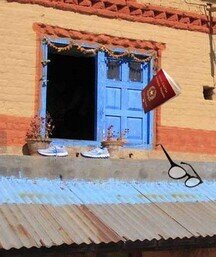
As is typical in Nepal, within five minutes there are a few hundred curious people standing around, entertained by this unexpected spectacle. Govindan, the owner of the guest house is green, both because he fears for the damage to building and furnishings, and because of the talk this will cause. Anyone who has never been to Nepal can have no idea what it means in this country 'to poke your nose into other people's business'.
Suffice to say that when that same afternoon I decided to go for a walk in the town to get away from the disgrace of the scene back at the guest house, dozens of people I'd never seen before and didn't know stopped me to ask what had happened that afternoon at the Butterfly guest house. When I returned that evening the storm had died down. Balance of damage: her passport ripped to pieces, his glasses smashed to smithereens. These were the less easily repairable damages, then there was more. They have been given separate rooms, seeing that they wouldn't hear of accepting Govindan's invitation to pack up and leave. The best of it is that two days later they were once more in love and accord!
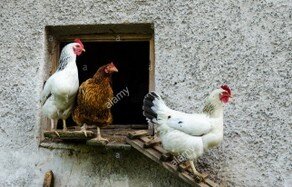 In the guest house next to mine there's an Afghan who's blonde and blue-eyed. He has great plans for the future, he wants to become a South-East Asia correspondent for some important German newspaper. At present he's living with his mother, who's separated from her husband, in Germany. He's well-informed and he doesn't seem to me to be a boaster. But he's over-fond of spending his evenings smoking hashish until late and then not getting up next morning till midday. The day I left Pokhara, he was to have caught the same bus to Katmandu but, as usual, he overslept and missed the bus. He can't be lacking money if he's able to squander it in such a way. The bus fare to Katmandu is 100 rupees!
In the guest house next to mine there's an Afghan who's blonde and blue-eyed. He has great plans for the future, he wants to become a South-East Asia correspondent for some important German newspaper. At present he's living with his mother, who's separated from her husband, in Germany. He's well-informed and he doesn't seem to me to be a boaster. But he's over-fond of spending his evenings smoking hashish until late and then not getting up next morning till midday. The day I left Pokhara, he was to have caught the same bus to Katmandu but, as usual, he overslept and missed the bus. He can't be lacking money if he's able to squander it in such a way. The bus fare to Katmandu is 100 rupees!In a guest house some distance from the town, in a really beautiful location by a lake, very inexpensive, but with the drawback of having the guest rooms on the ground floor, directly under those occupied by dozens of hens, there's an English couple from Devon. They are in a bad way, their clothes are quite dirty. At home, they tell me, they live in a caravan, parked in the country. They wash in the stream and use candles for light. Here, to save the rupees a guest house costs they are looking for a cabin to rent from a Gurung [one of the thirty Nepalese ethnic groups], over on the other side of the lake.

A LITTLE OF EVERYTHING
Random notes and considerations...
In many Nepalese hotels and guest houses I've found the mirrors hung at stomach level. Is anyone able to explain why?
About strange and amusing misspellings. The sentence:
'TAKE A PONY RIDE THROUGH THE SPOILT NEPALESE COUNTRY'
reported by the Lonely Planet guide, has now been corrected. What a pity!
The richest sources of misspellings are the menus, though. Here are a couple: breakfast, corn flex; for sweet, canned leeches.
I have to say that having had plentiful experience of these disgusting creatures on the mountains of Helambu and Langtang, this misspelling made me shudder . . .


